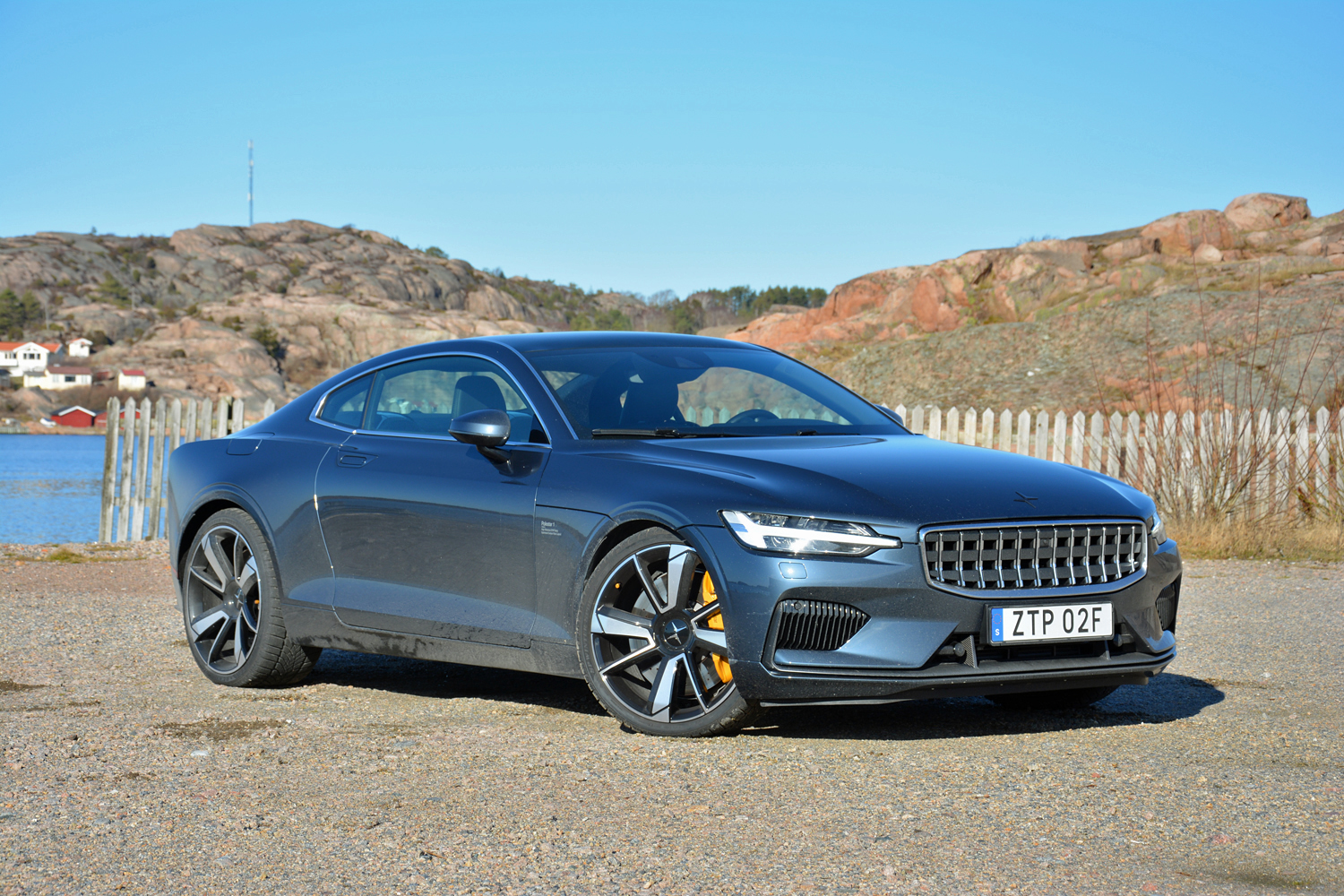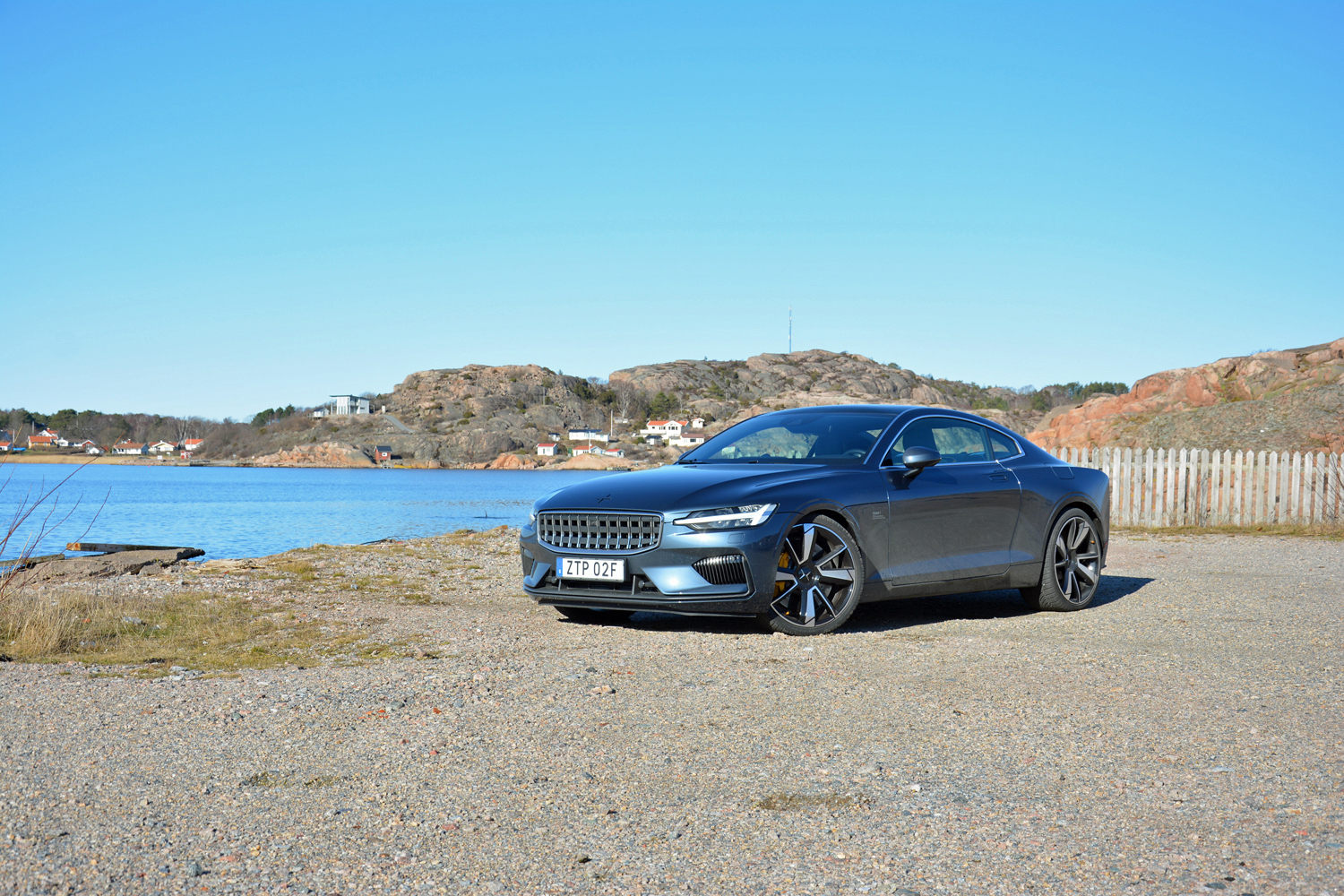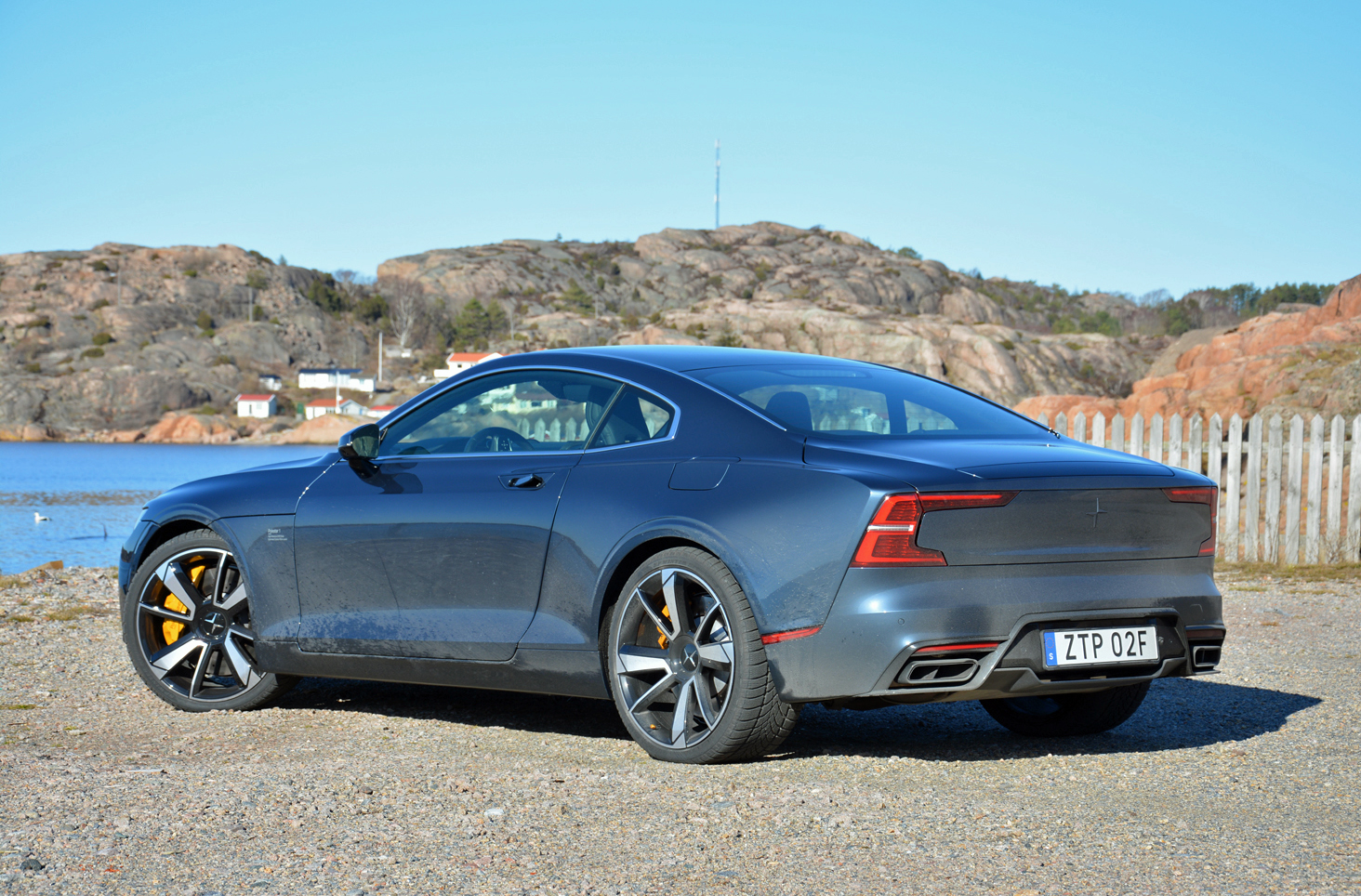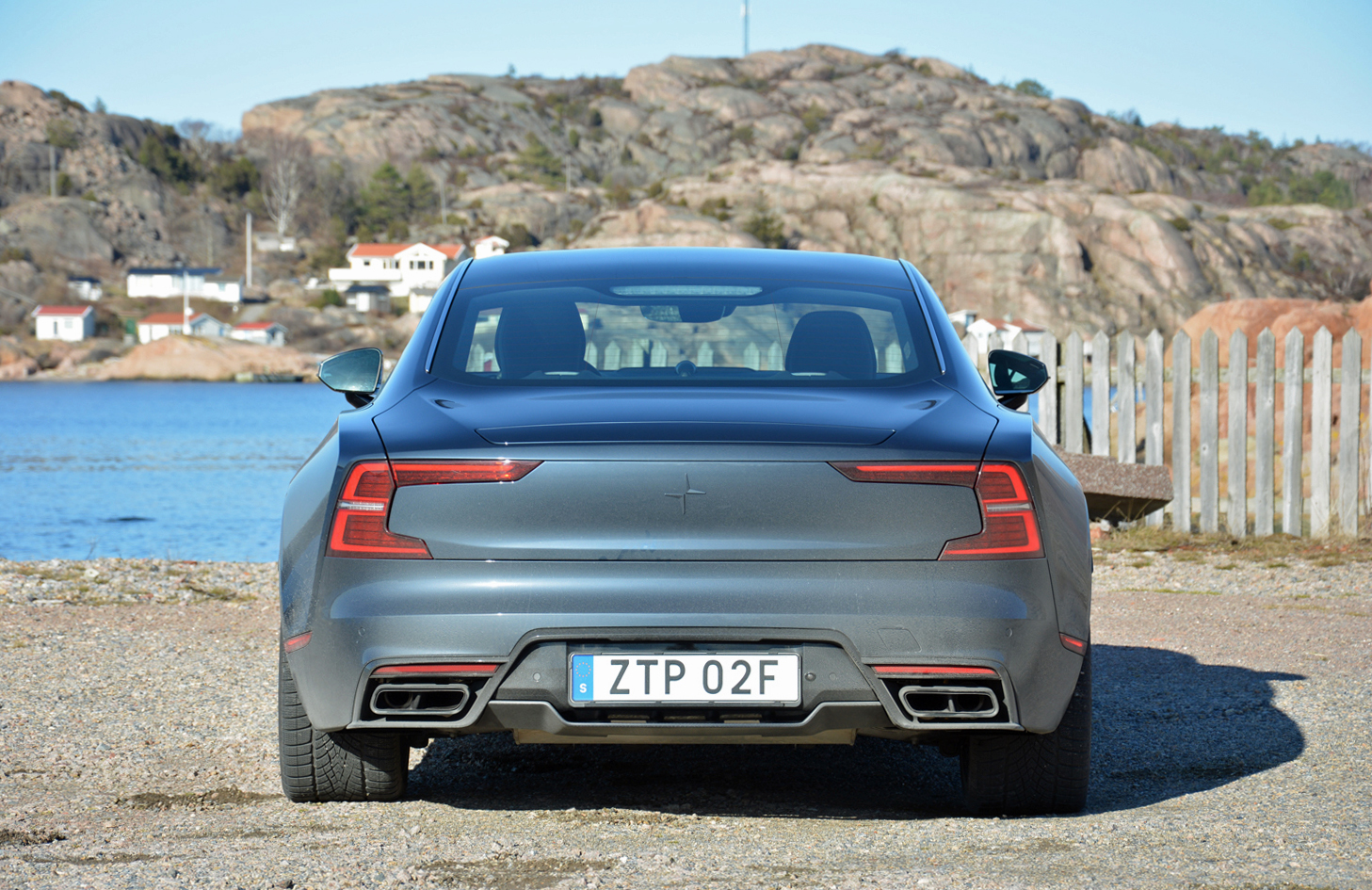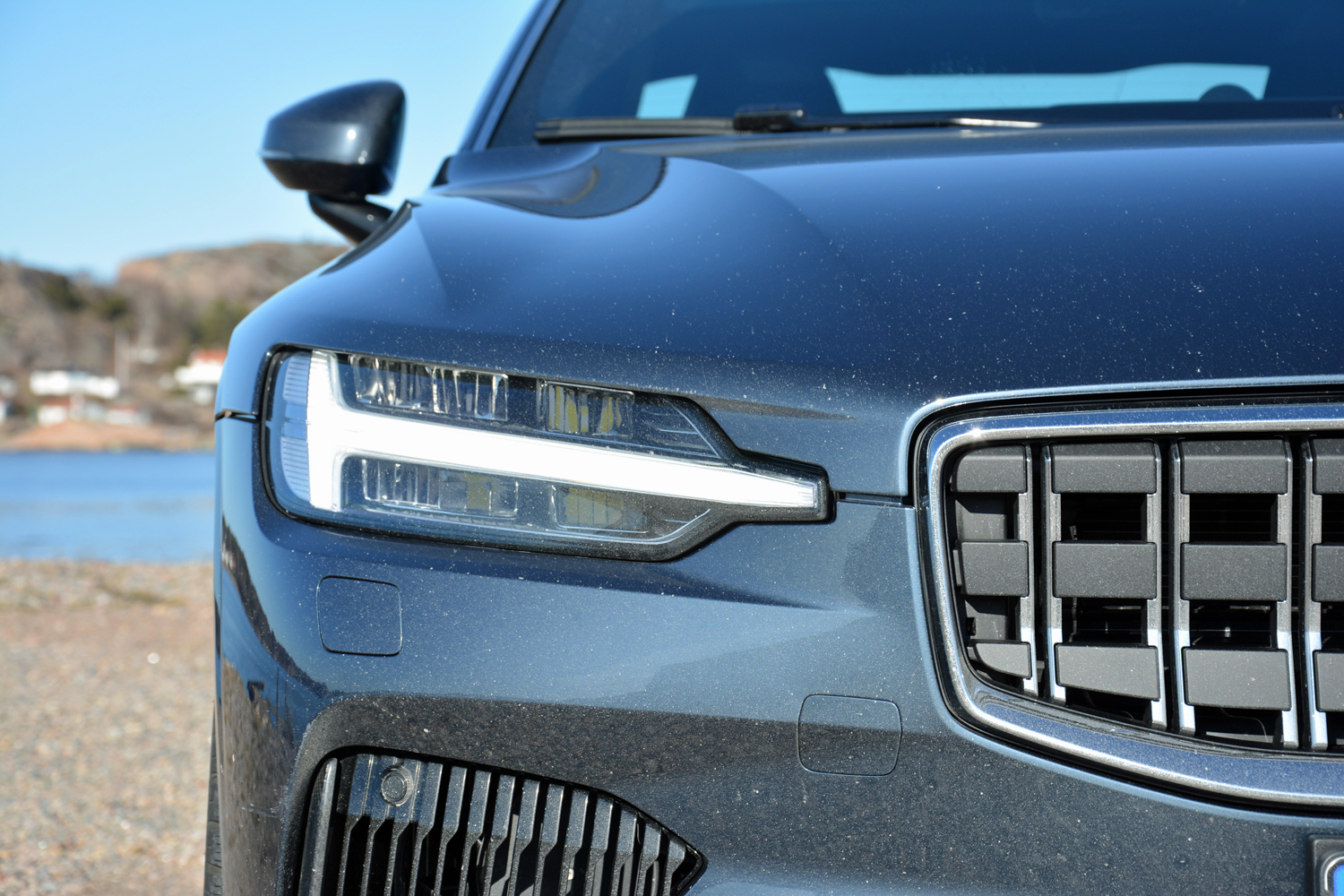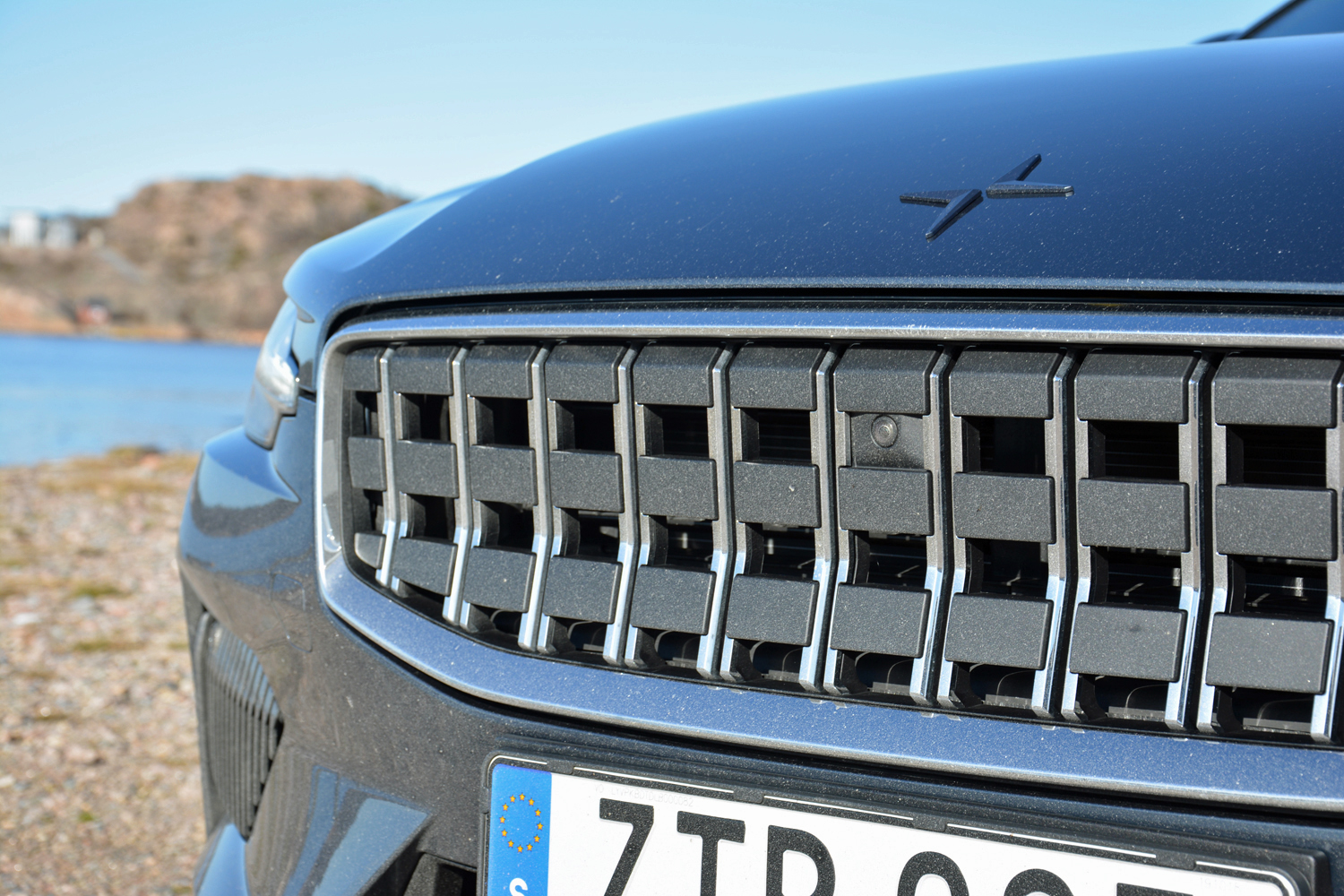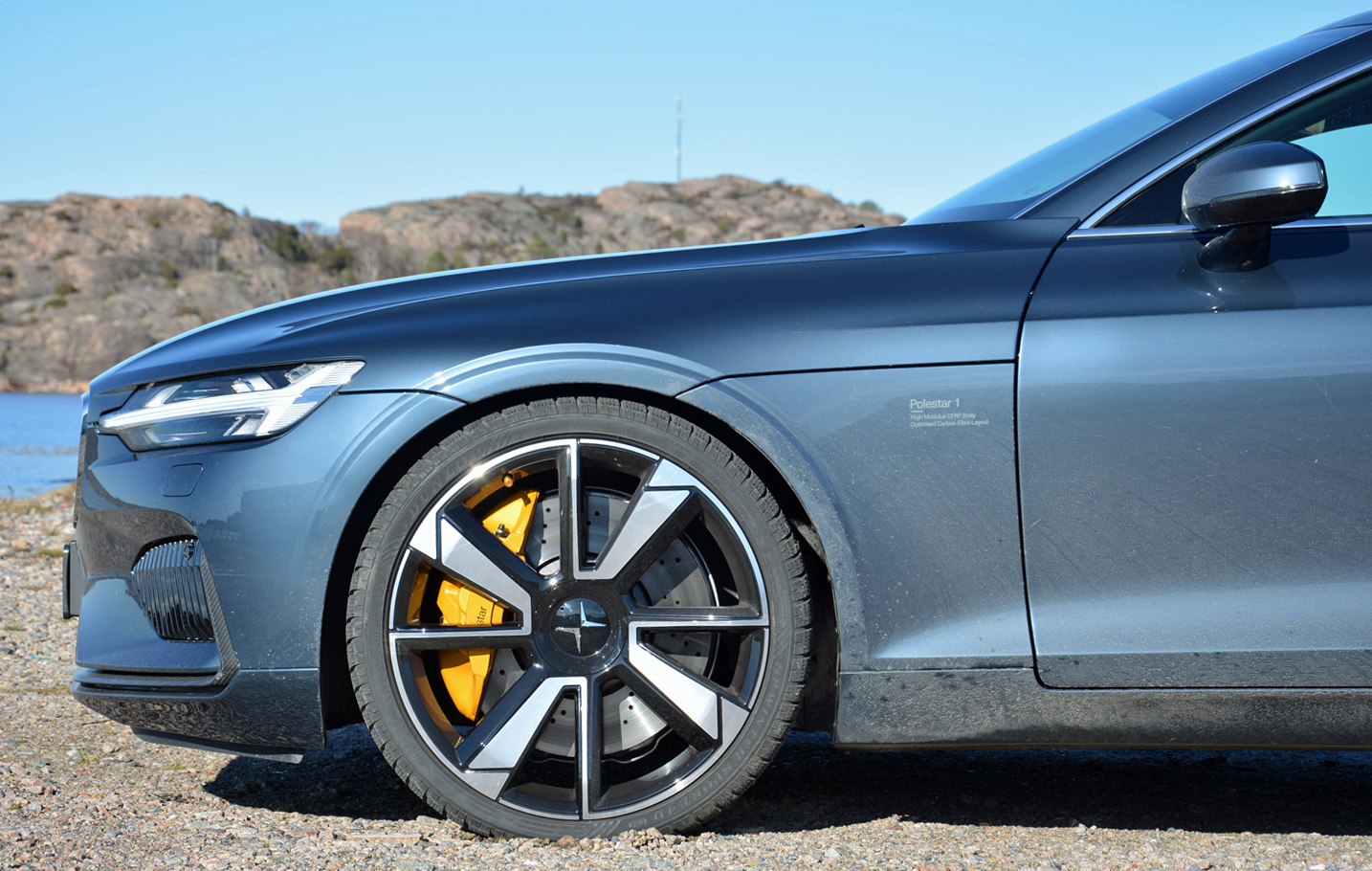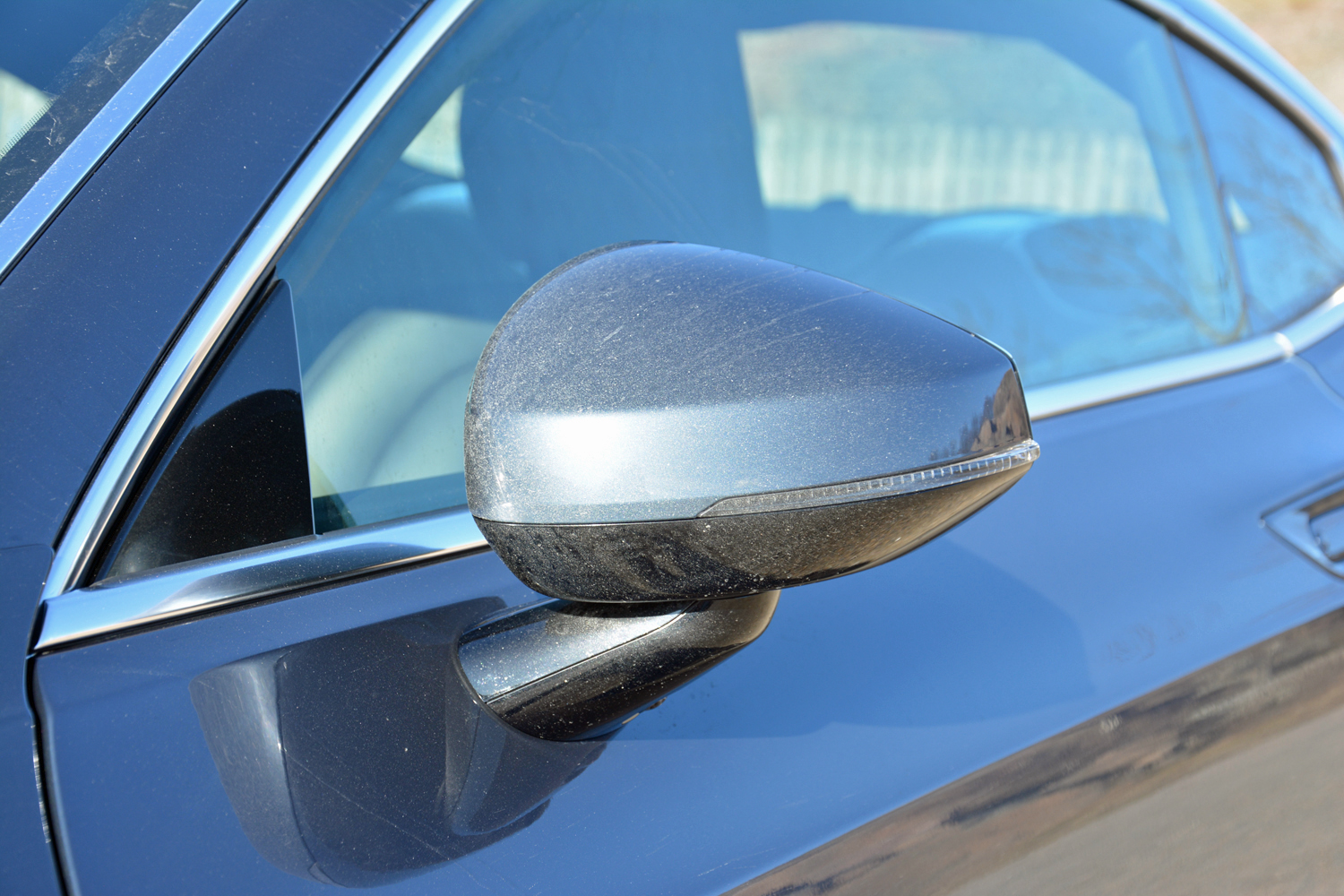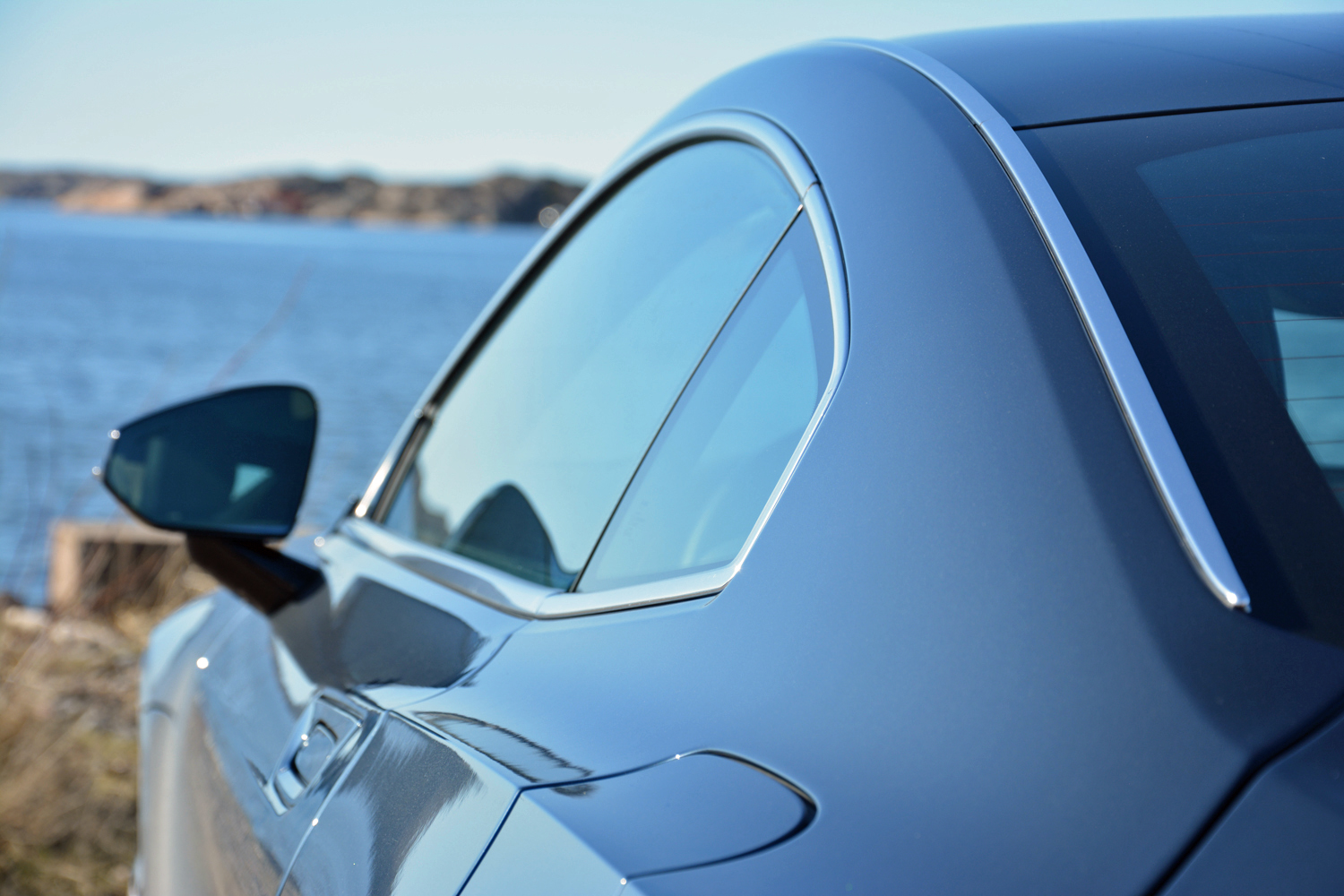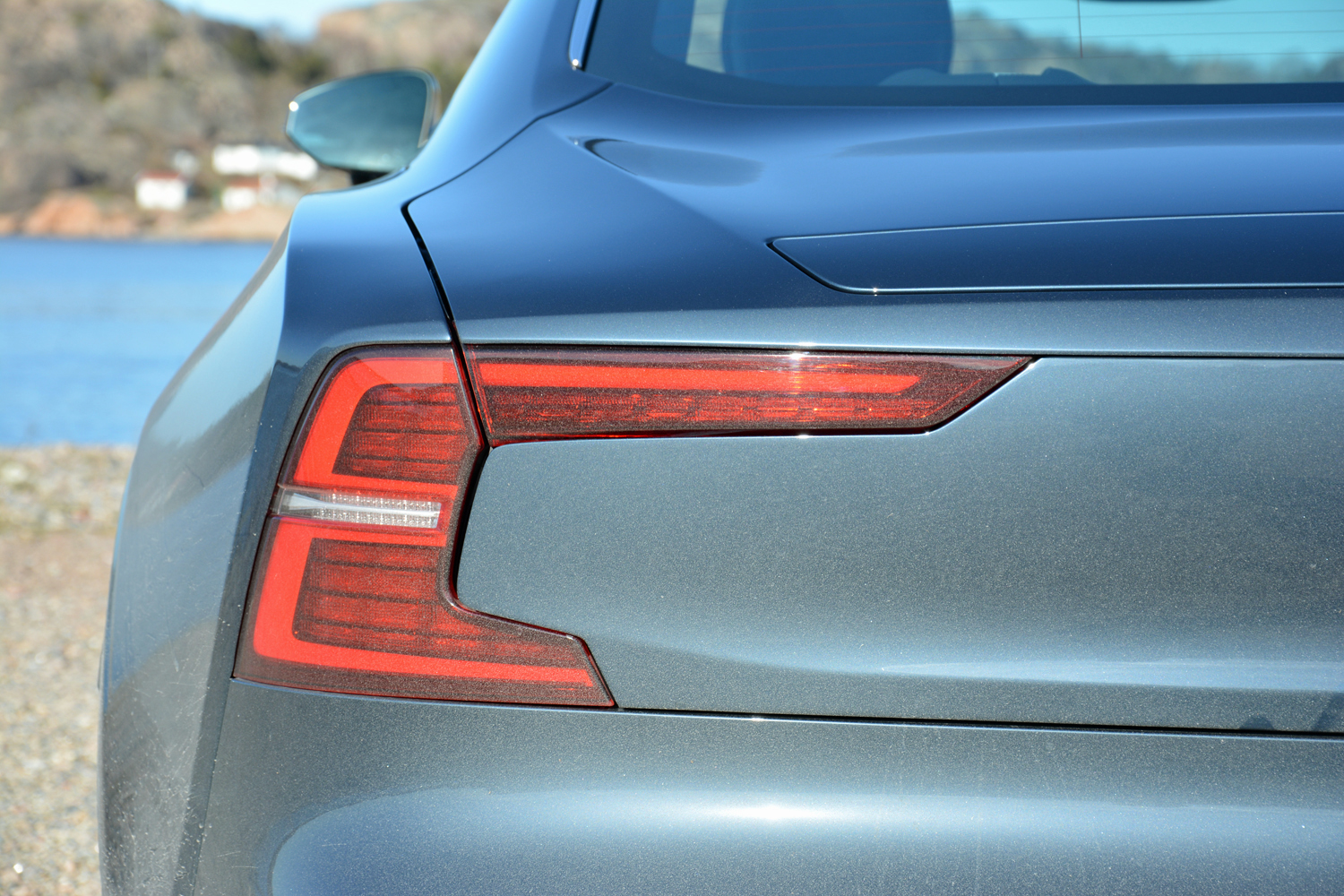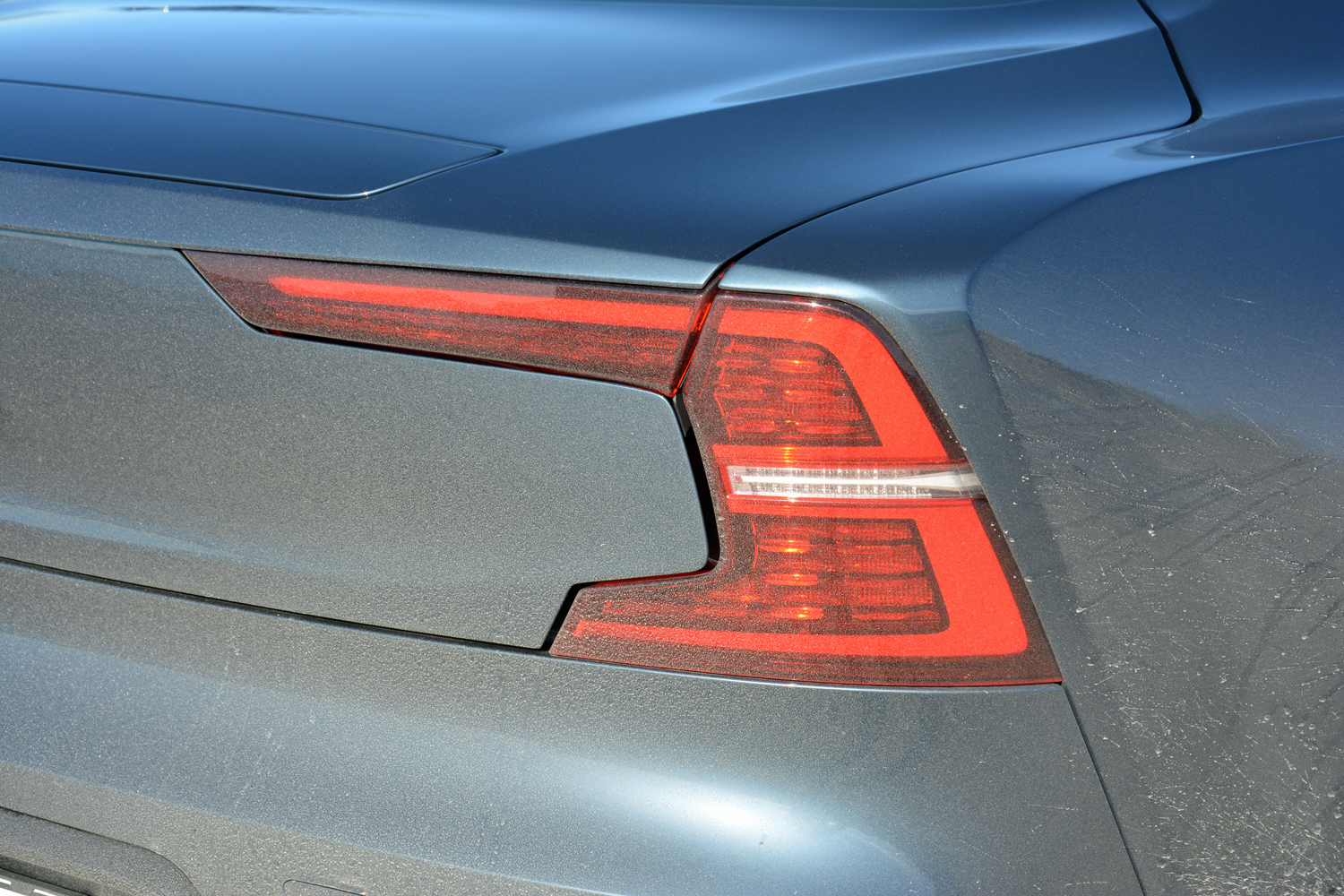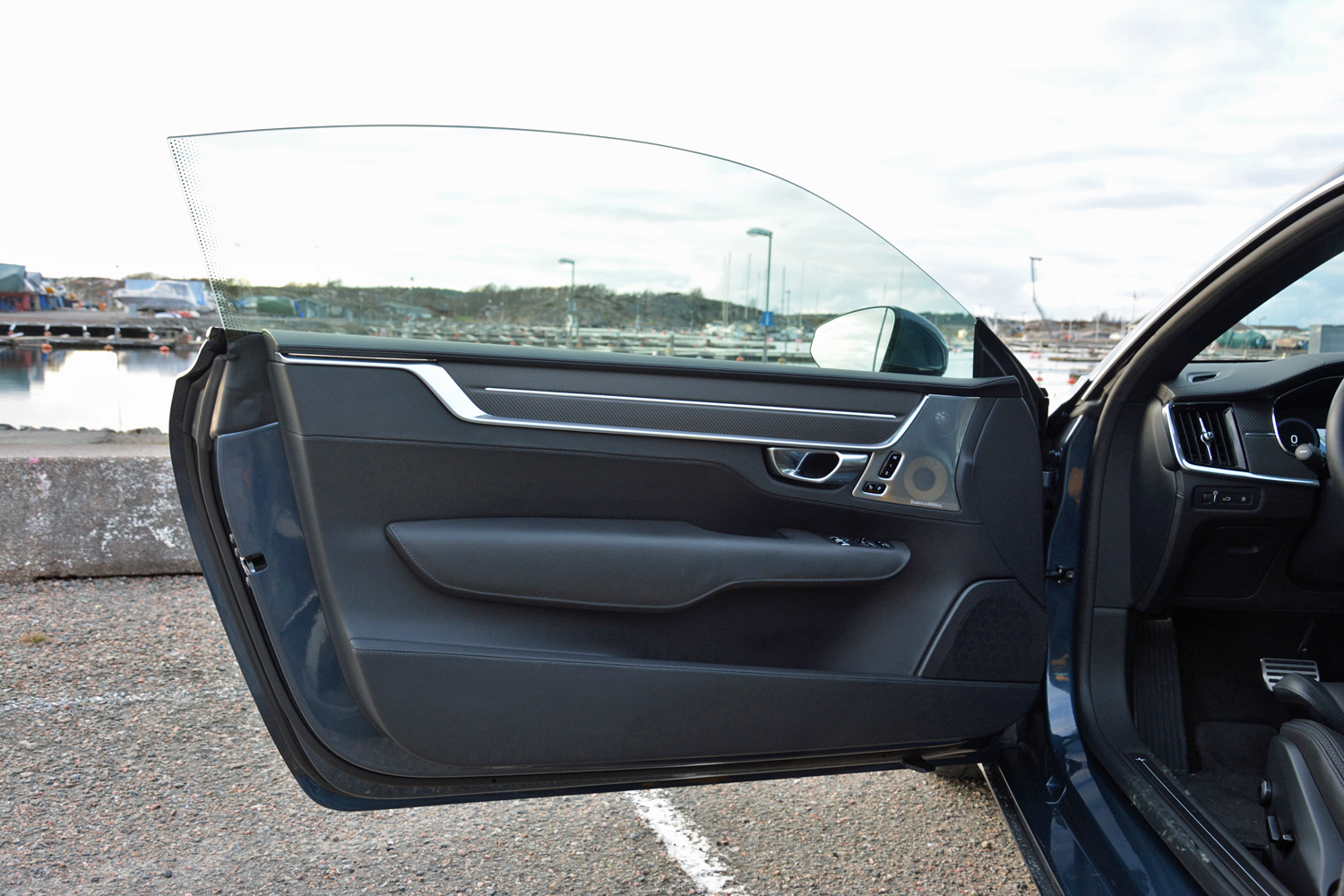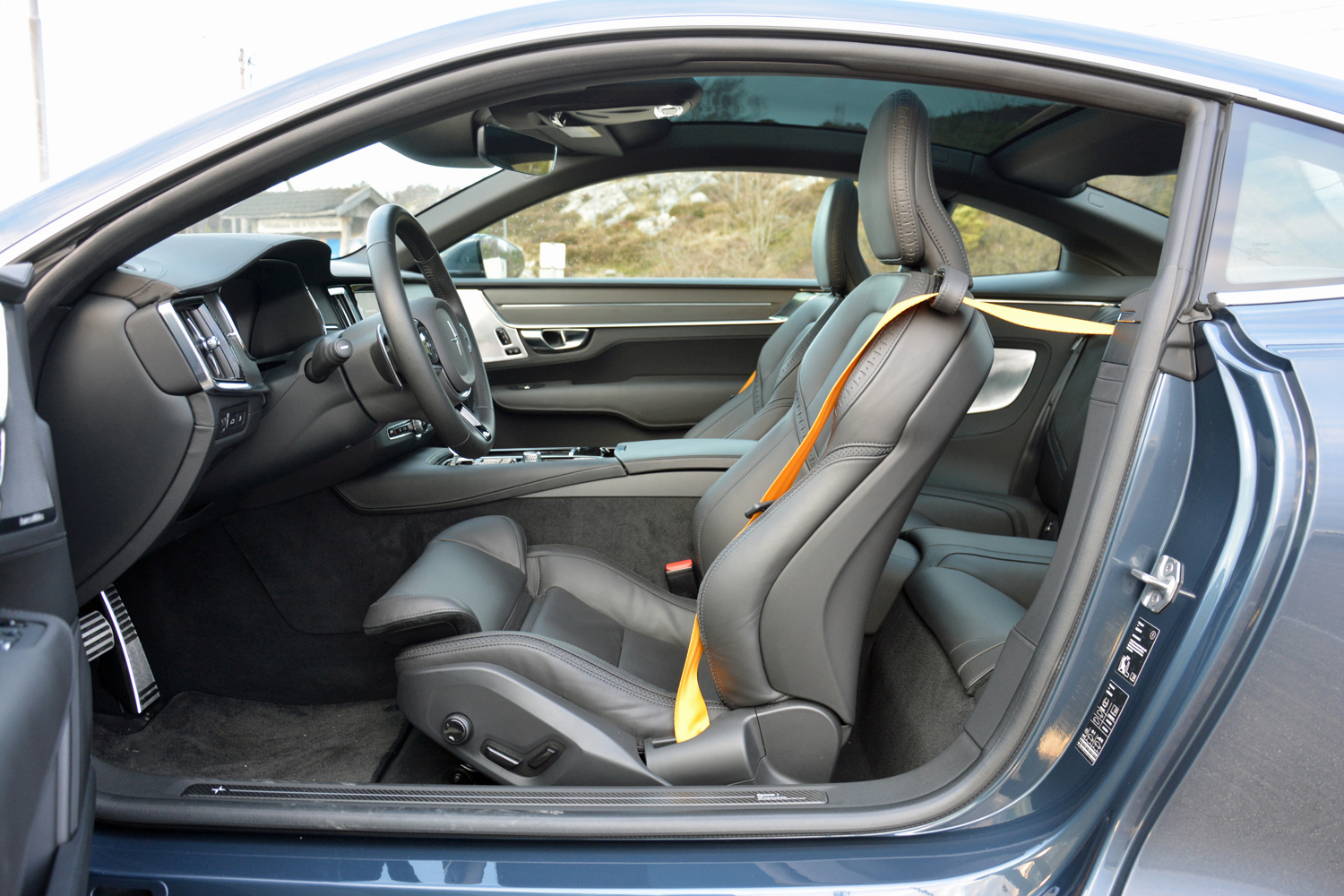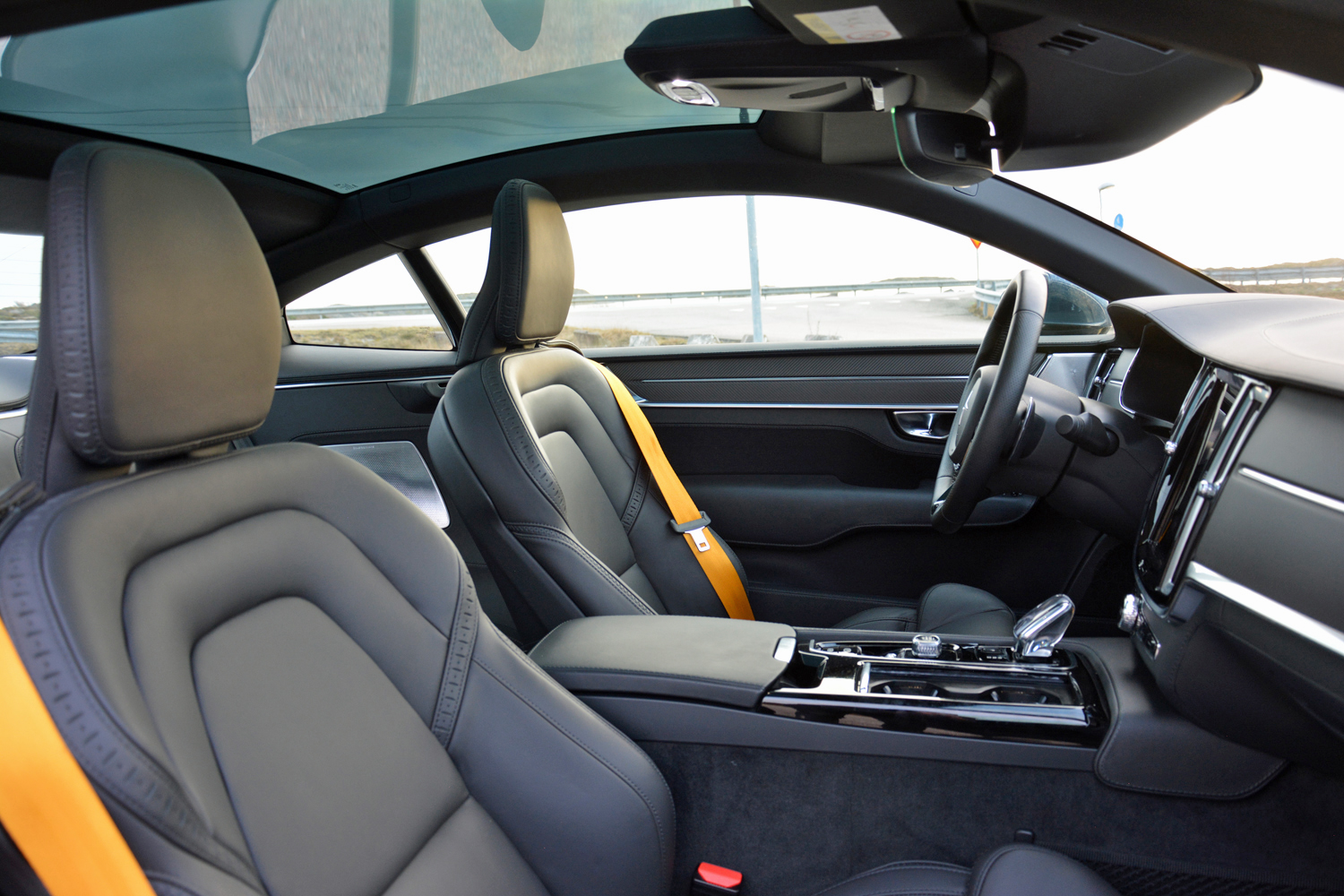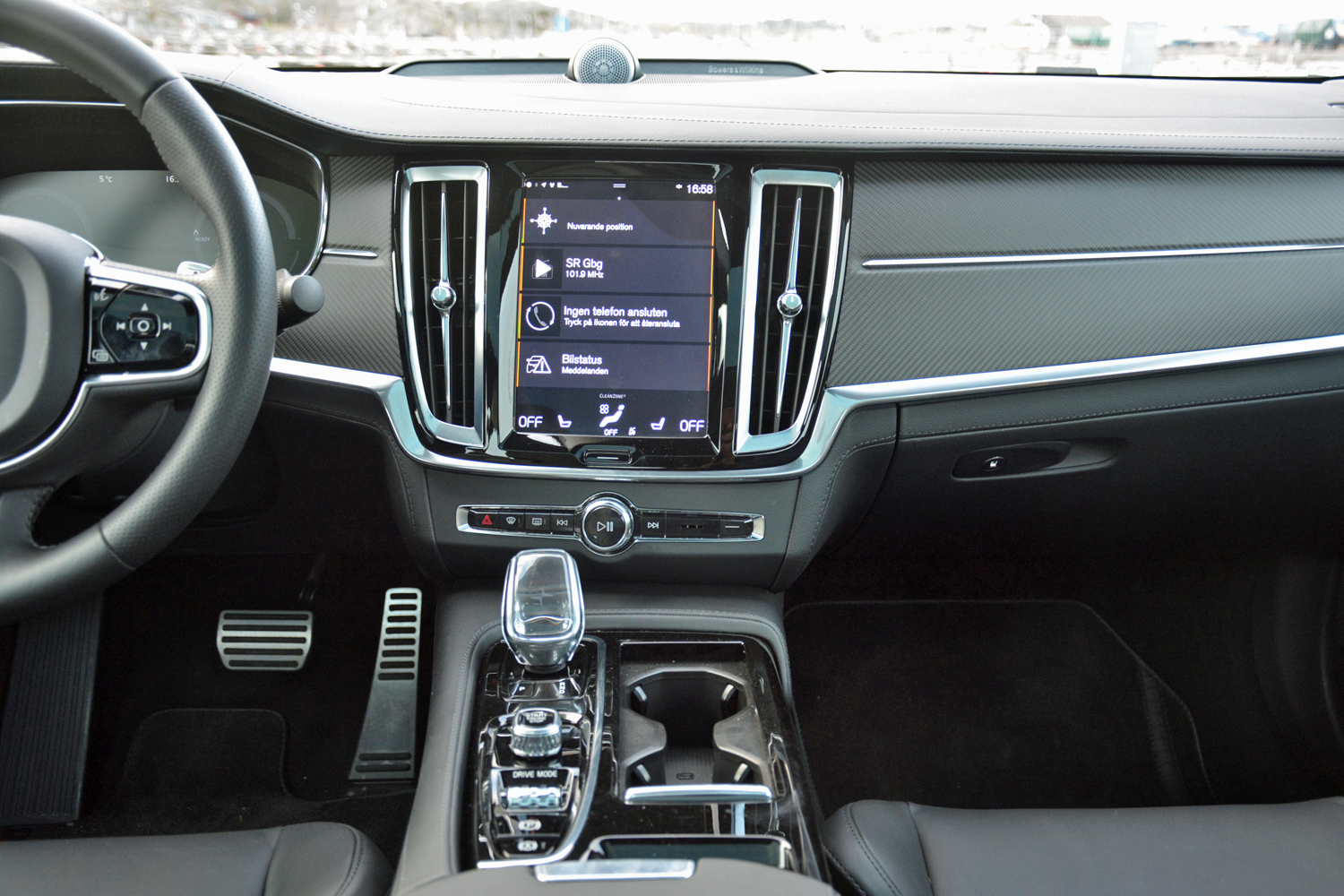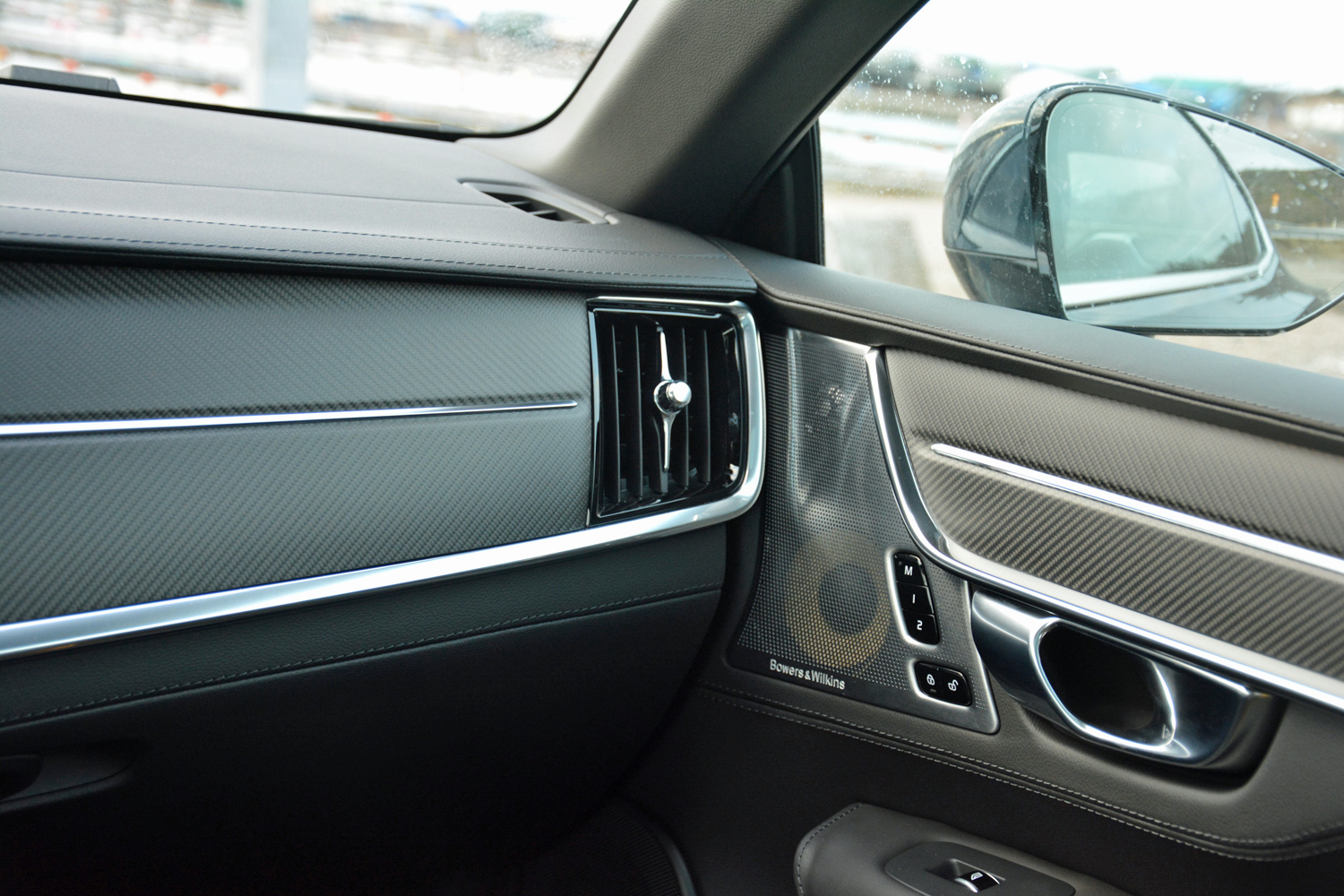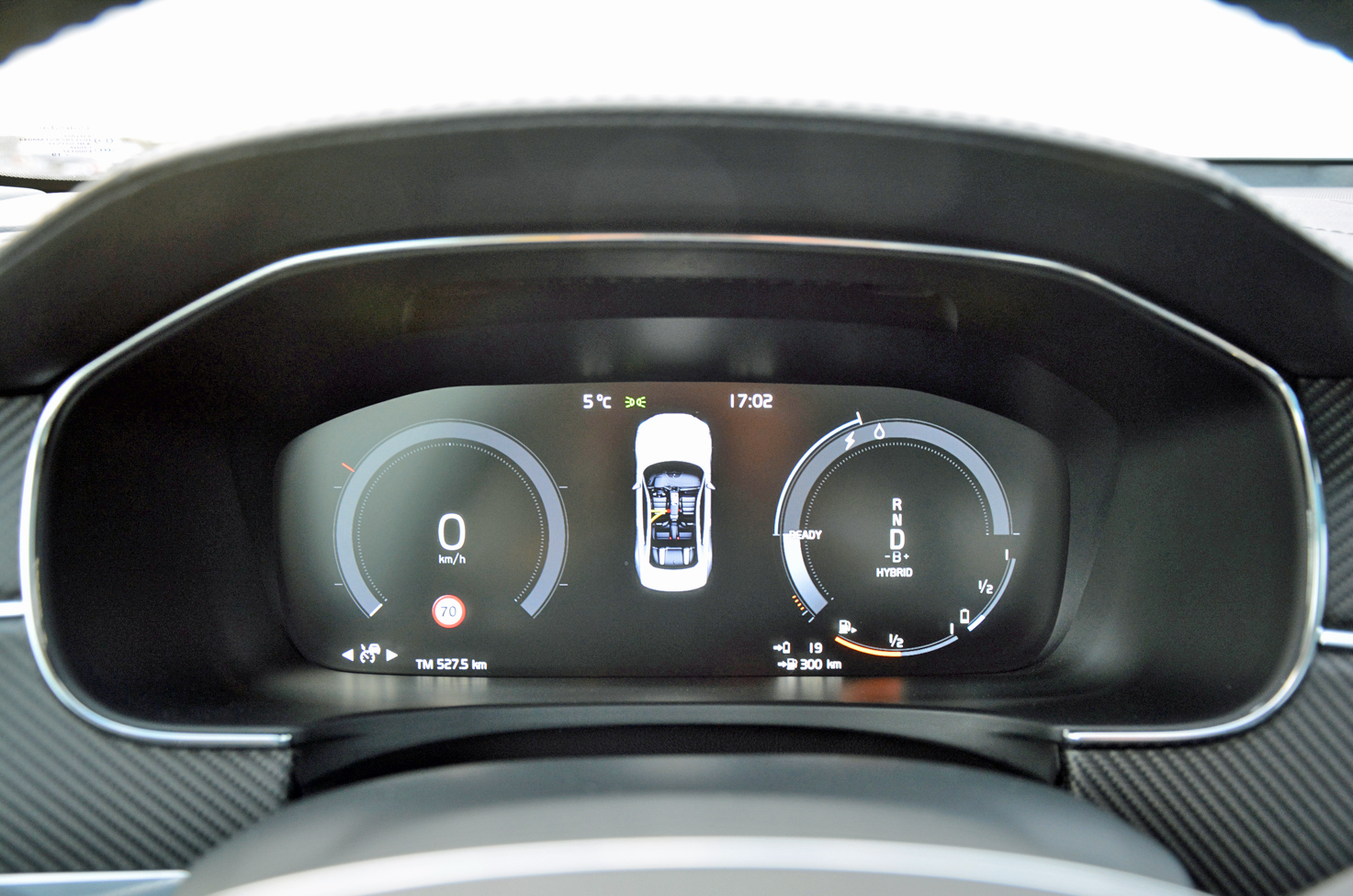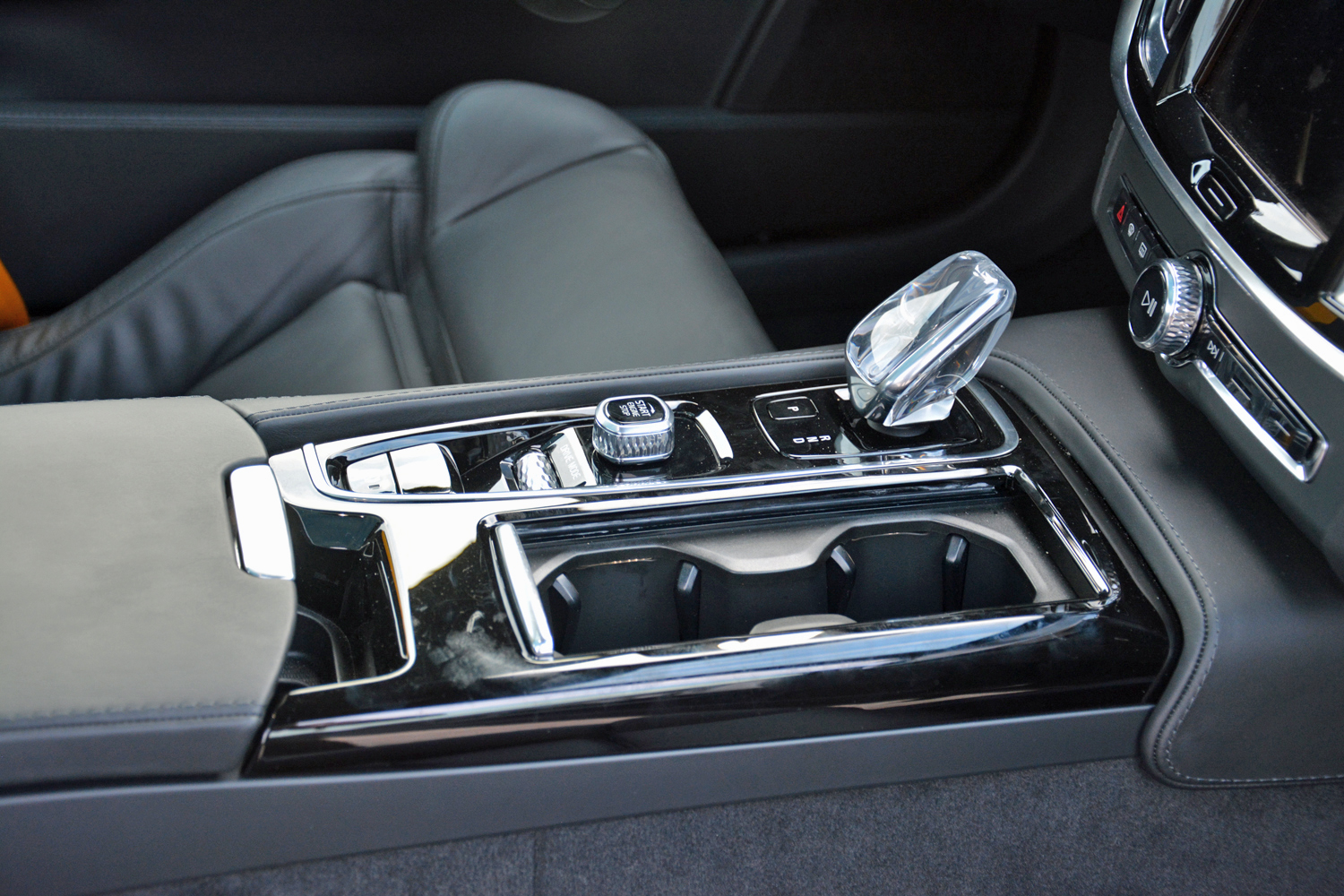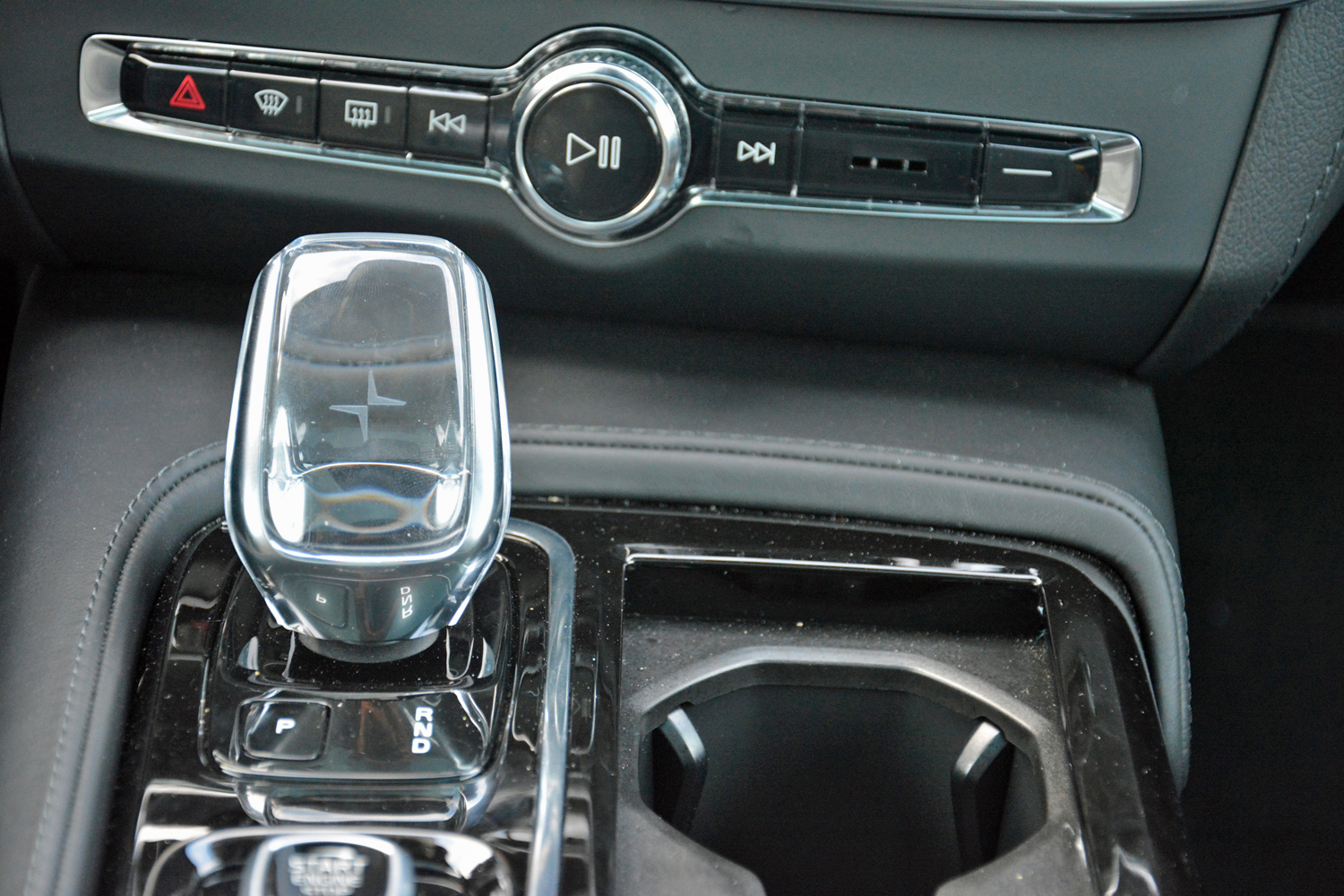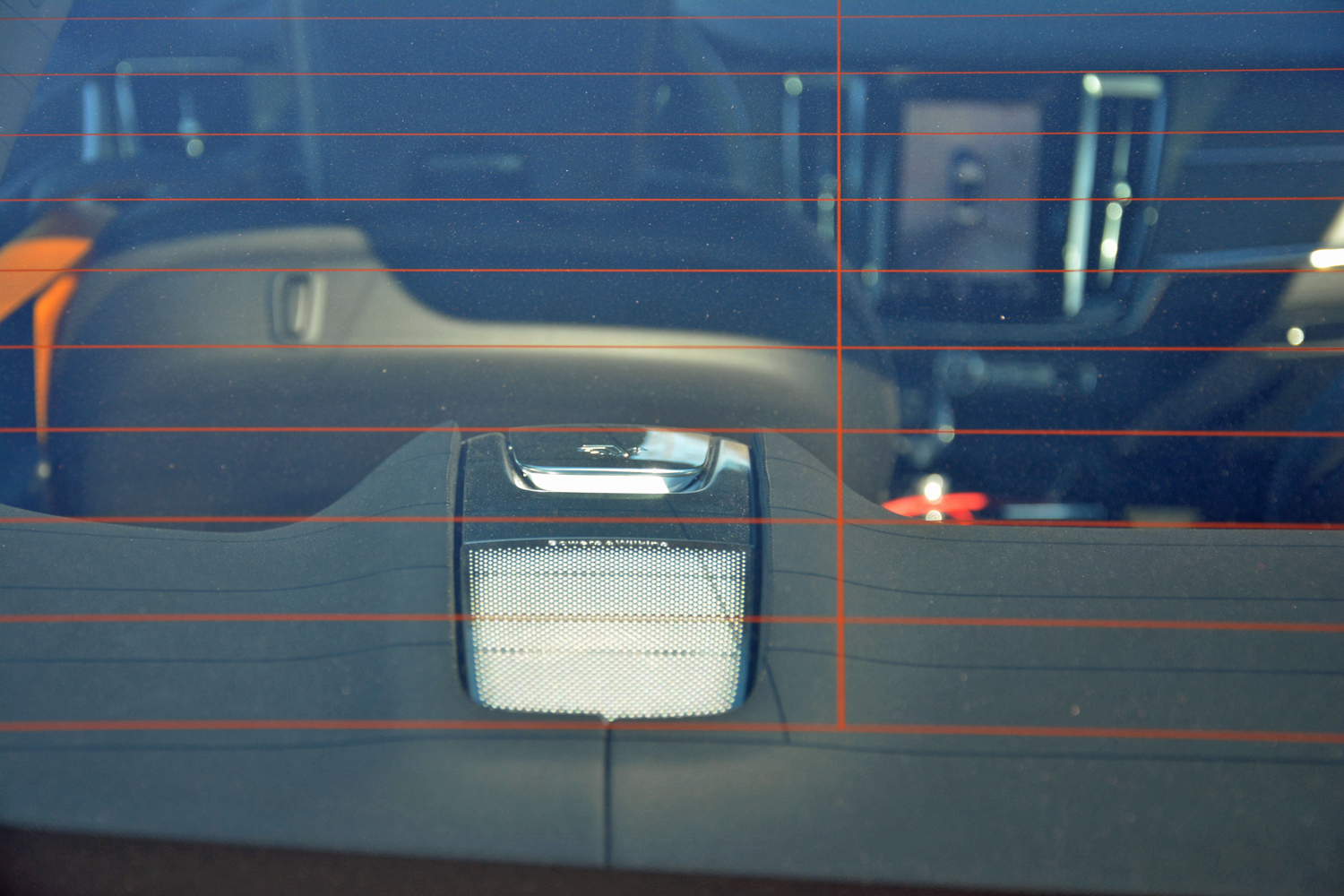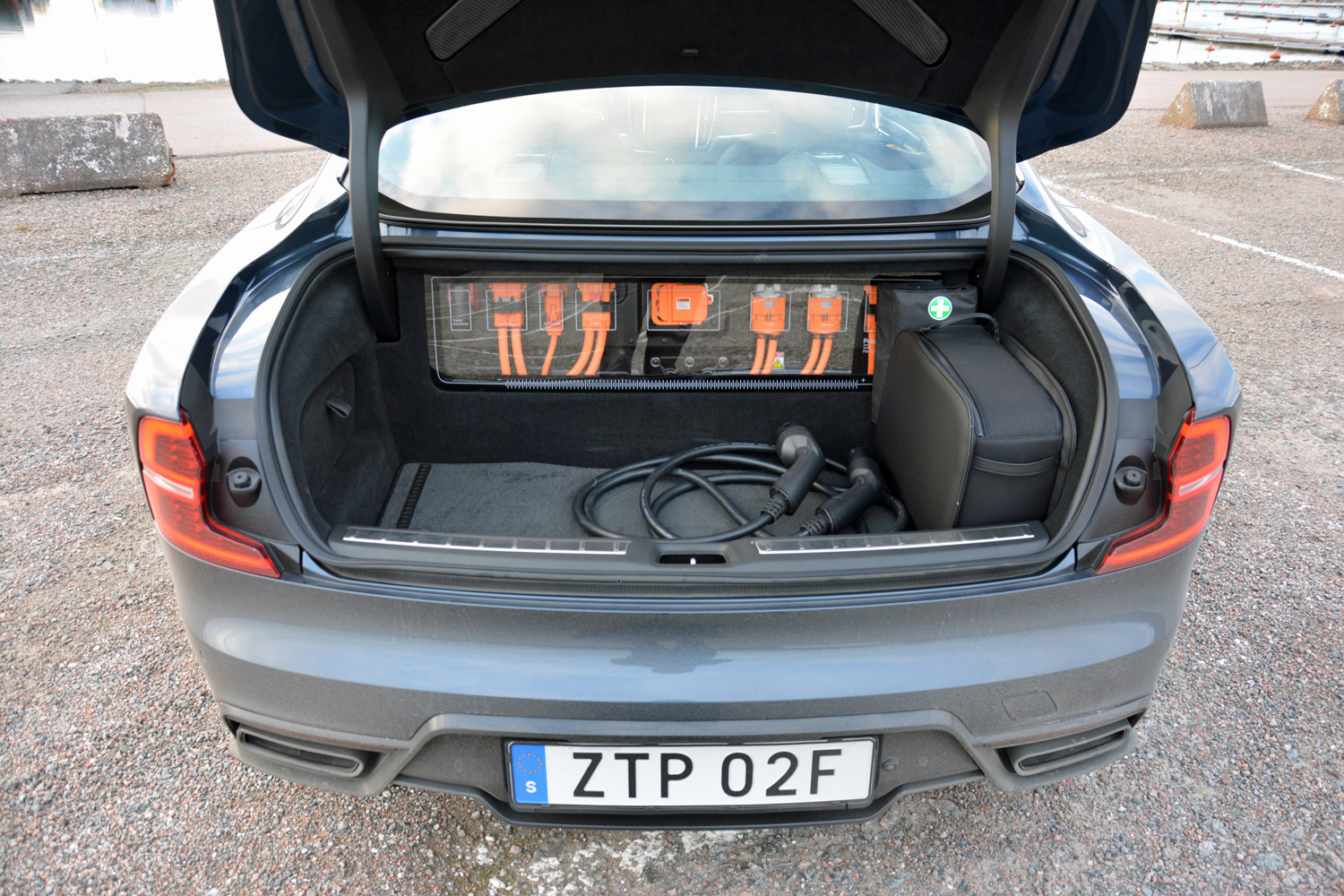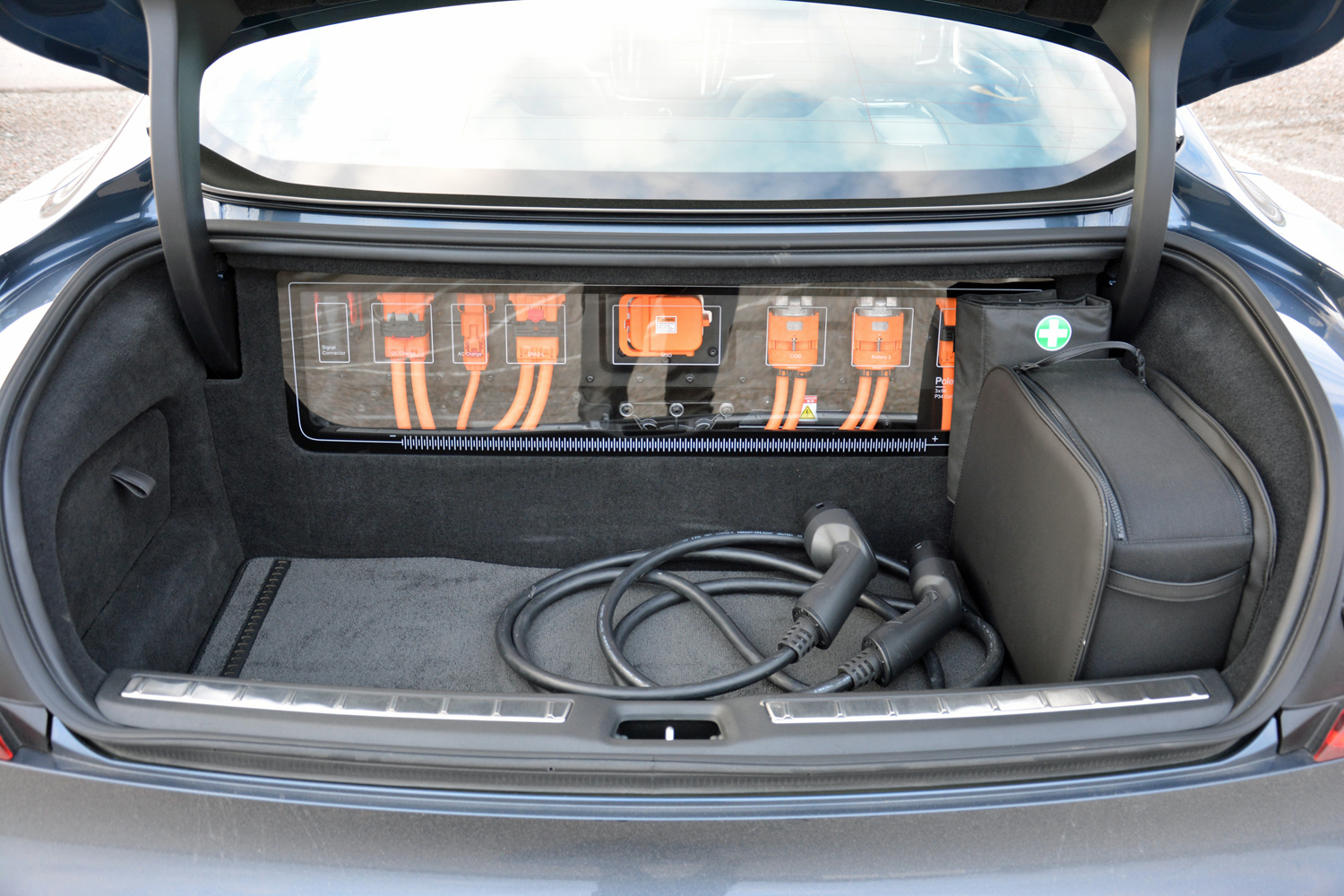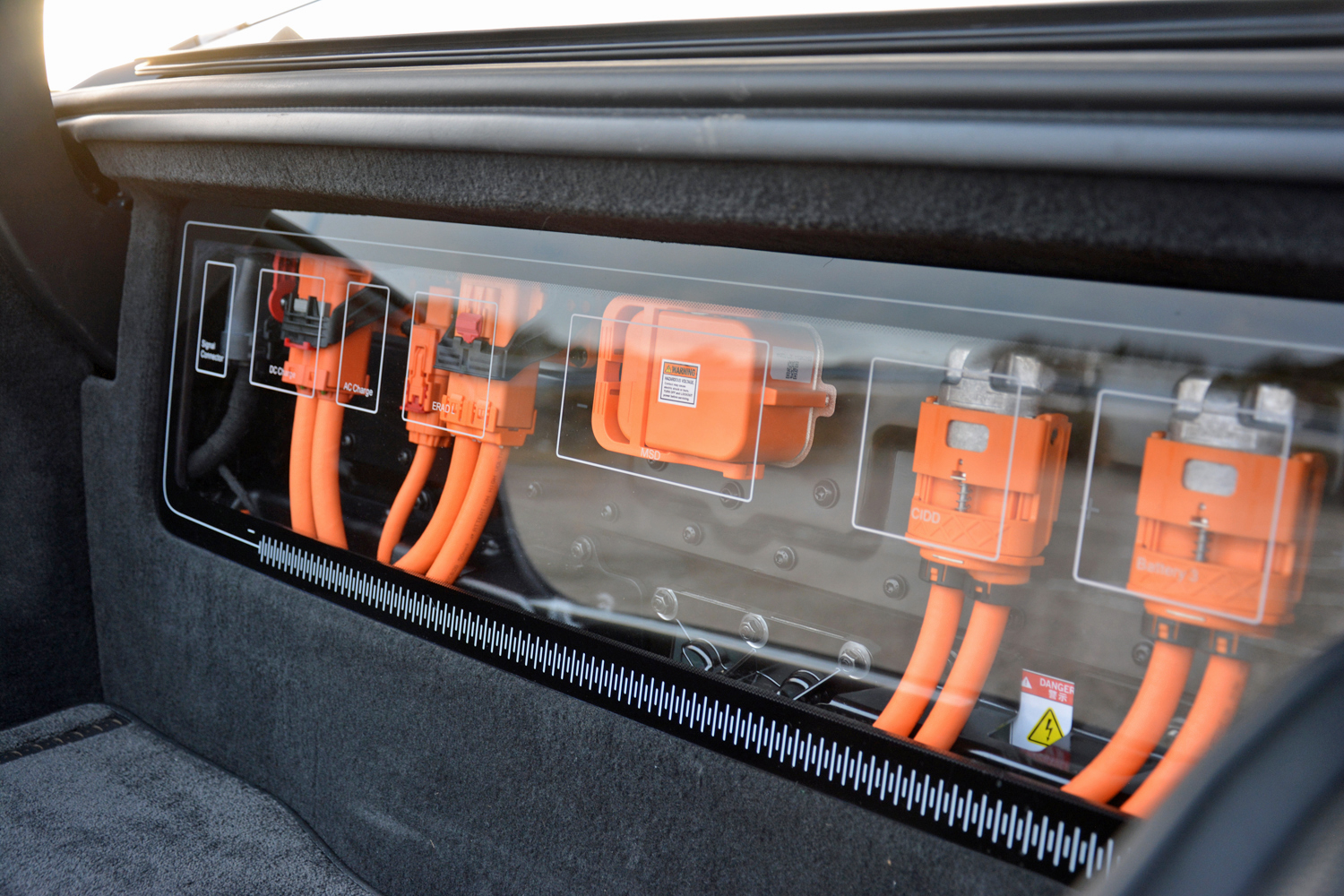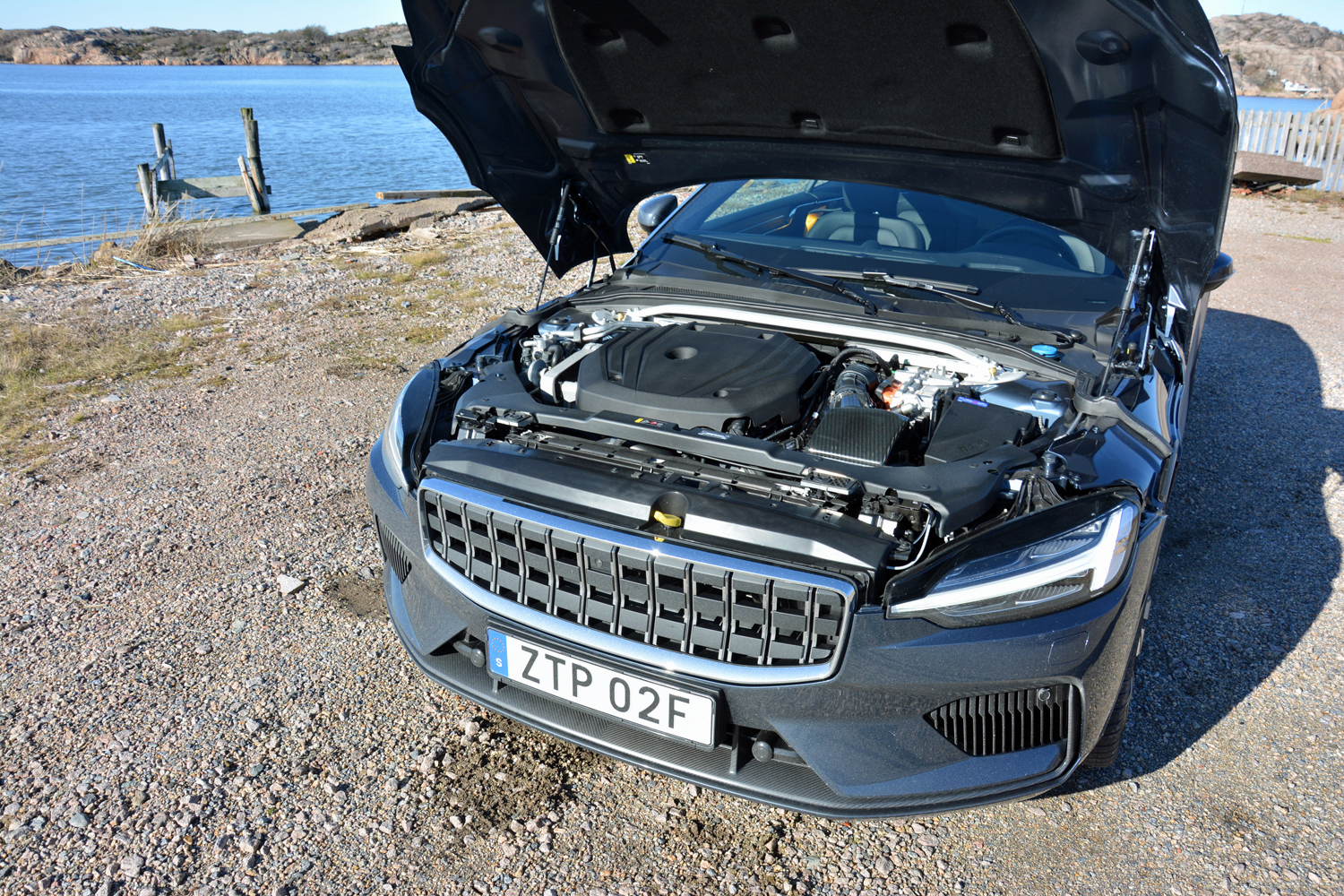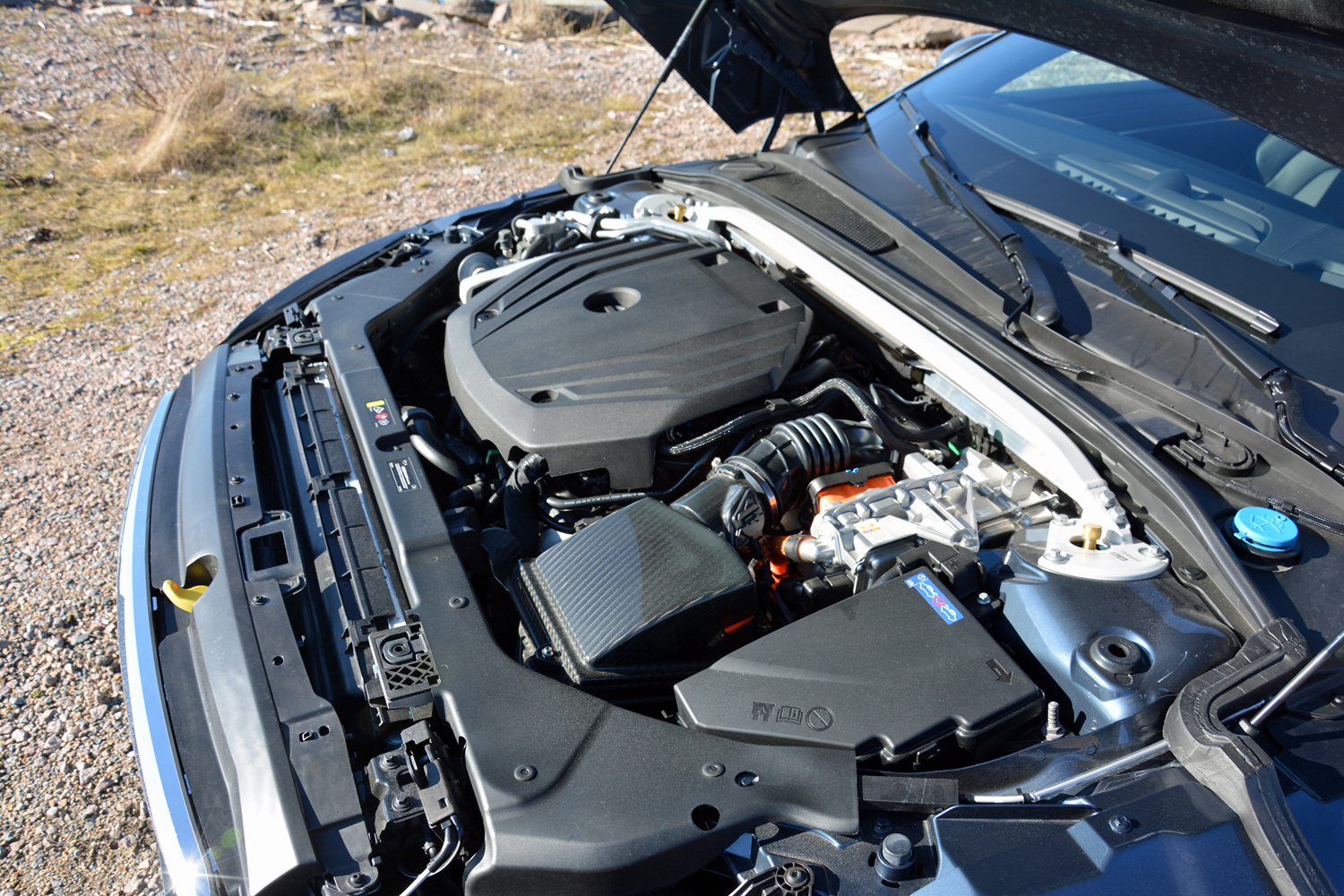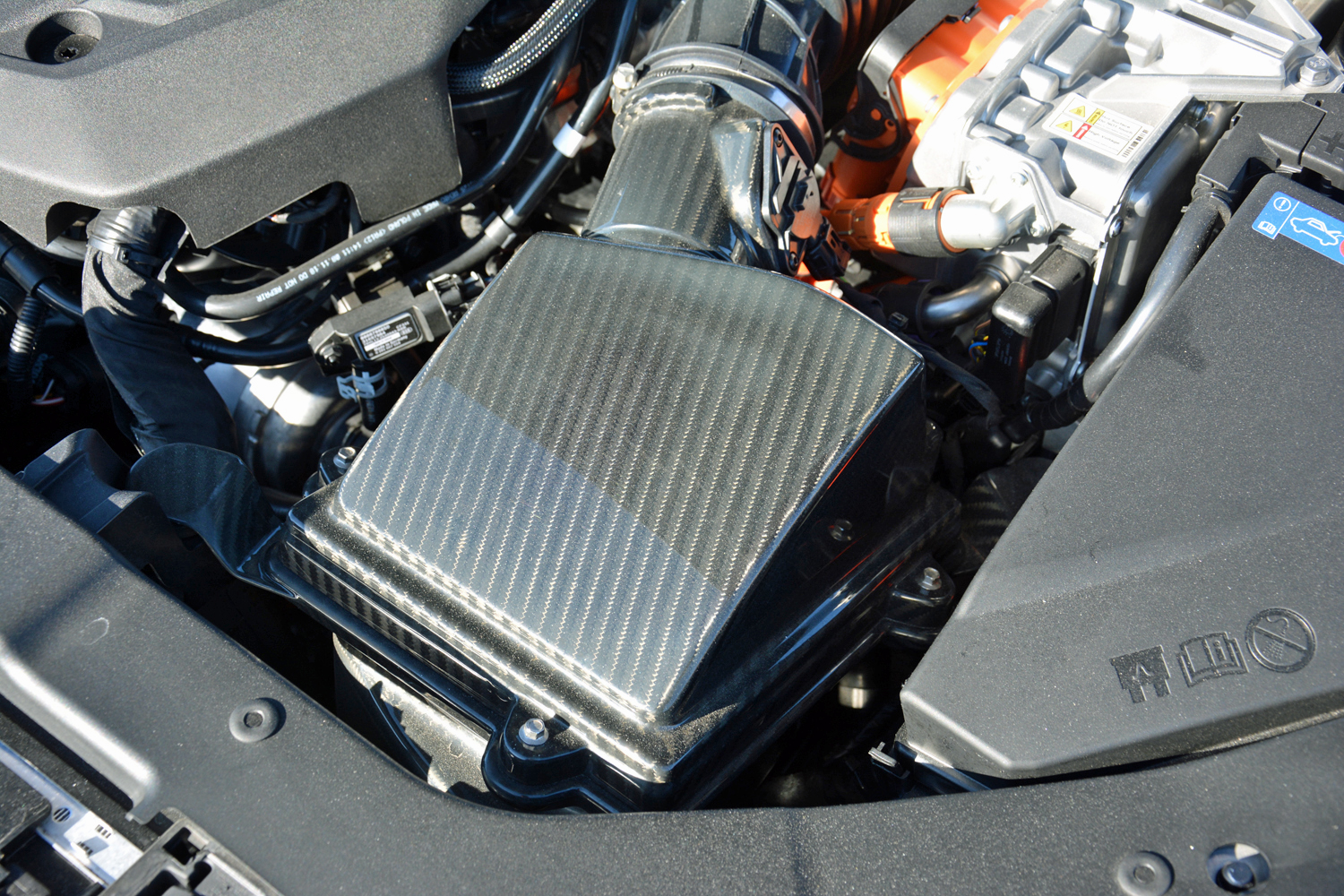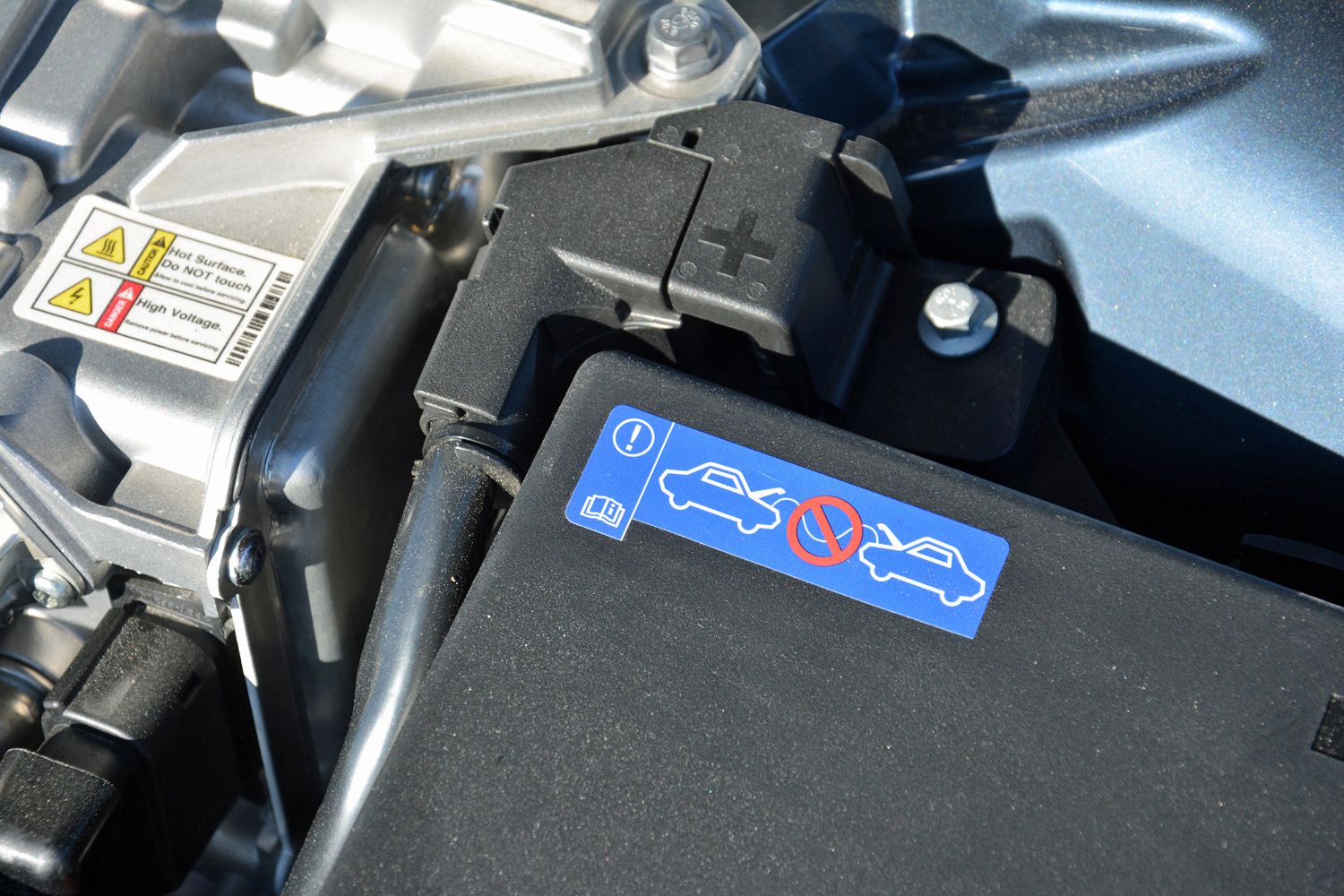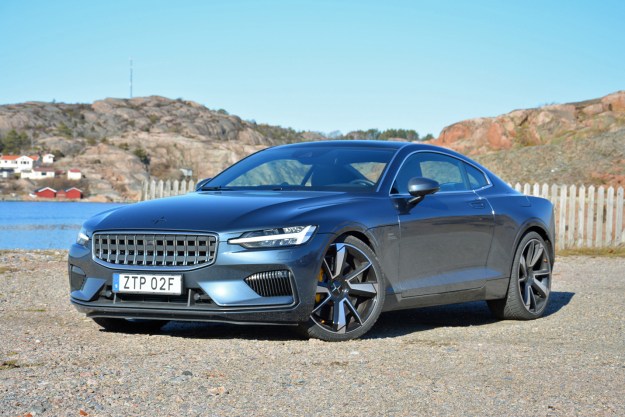
- Gorgeous design
- Seriously powerful
- Real torque vectoring
- User-friendly tech
- Tiny trunk
- Feels very Volvo-like inside
Heritage is a double-edged sword in the automotive arena.
It sells cars, and there are entire brands unabashedly built on it, but in the era of electrification, it’s also a burden. How would enthusiasts react if Porsche released a 911 powered by a flat-twin generator and four electric motors? Not well.
That’s where Polestar comes in. Created in 2017, it has no heritage as a stand-alone brand, so it’s unfettered by rules except the ones it lays down. The 1, its aptly named first car, doesn’t stray far from the styling cues that define GT coupes but it eschews a large-displacement engine for plug-in hybrid power. Does it move the segment forward, or does it fall short? I flew to Gothenburg, Sweden, to get acquainted with one of the 1,500 units Polestar plans to make.
Design and interior
If you’re ogling photos of the Polestar 1 and wondering what kind of Volvo you’re looking at, you’re not alone — at least four people asked me during my time with it. You’re on to something, too. This shapely two-door started life as the Concept Coupe the Swedish company introduced at the 2013 Frankfurt Auto Show to preview its next design language. Executives beamed as they celebrated the gorgeous design study as the P1800’s heir, but no one expected it would see the light at the end of a production line. It should have spent its life in the company’s museum.
I thought I’d fly under the radar in the Polestar 1. I was wrong. It turned heads everywhere it went.
Its fate changed completely when Volvo and parent company Geely promoted Polestar from a tuner and race car builder to a stand-alone luxury brand in 2017. Making a business case for a two-door version of the S90 suddenly became a lot easier, so Volvo’s design icon morphed into an upmarket grand tourer with supercar-like power and a price to match. It makes extensive use of carbon fiber to offset as much of the hybrid system’s weight as possible.
What we saw in Frankfurt seven years ago is, somewhat unexpectedly, almost exactly what Polestar builds. Here’s a cheat sheet if you want to play spot the differences: Stylists redesigned the lower part of the front bumper, yanked the Volvo emblem from the grille, and gave the rear end a nip-and-tuck. The elegant proportions and the attractive, restrained lines remain. It’s all done in a very subtle and ultimately very Swedish way. Designers didn’t tack on a rear wing the size of a bench on the National Mall, or an air scoop shaped like an oversized Cool Ranch Dorito.
With that said, I thought I’d fly under the radar in the 1; I was wrong. It turned heads everywhere it went. I sipped a double espresso while watching a man jog past it, circle back, and spend at least 3 minutes examining it from every angle. Those with their pulse on the car industry immediately know they’re looking at something special. Polestar will make only 1,500 examples of the 1 in Chengdu, China, so the odds of spotting one in the wild are low.

Inside, parts like the three-spoke steering wheel, digital instrument cluster, infotainment system’s touchscreen, and the vents that frame it will look familiar if you’ve been in a late-model Volvo. Stylists added yellow seat belts and a gear selector made with Orrefors crystal, among other brand-specific touches, but it still looks and feel very much like a Volvo from behind the driver’s seat, and that could be a turnoff at this price point.
The cargo compartment deserves a special mention; the Polestar 1 is the only car I’ve ever driven with a trunk that is as useless as it is fascinating. And, believe me, it registers an ultra-strong signal on both radars. Its total capacity checks in at 4.4 cubic feet, which is a little less than what you find in a mid-engined Lamborghini Aventador S.

That’s because part of the drivetrain’s battery pack is housed in the transmission tunnel, where the driveshaft would normally go, and the rest is crammed right behind the rear seats. I was able to fit a carry-on suitcase, my briefcase, and not much else.
The trade-off is that you can marvel at the orange high-voltage wiring through a transparent, scratch-resistant panel. Each connector is labeled so you know what’s what — it’s a cool way to showcase tech. It almost feels like you’re walking through a life-sized wiring diagram, which is heavenly for car tech nerds.
Tech and infotainment
The doors are lighter than you’d expect considering their size, thanks to carbon fiber. Once inside, the driver sits behind a 12.3-inch, high-resolution digital instrument cluster that groups a speedometer, an electricity gauge, a fuel gauge, and a fourth dial added to provide information about what the hybrid system is and isn’t doing. For example, it signals precisely when the powertrain will switch from electric to gasoline power. Navigation directions are displayed in the instrument cluster, too, though you can also find them in the standard head-up display, and in the touchscreen located on the center stack. There’s also Android Auto, so you’ve got no excuse to get lost in here.

Speaking of the touchscreen, it’s a 9.3-inch unit shared with — you guessed it — members of the Volvo range. I’ve praised this system’s intuitiveness in previous reviews, and it’s no different here. It contains a colossal amount of information, yet it’s easy and straightforward to use. The different menus are clearly labeled, the graphics are sharp, and its response time is quick.
Polestar inherited Volvo’s manic, decades-long obsession with passenger safety.
There are better systems on the market, like Mercedes-Benz’s MBUX software, but Polestar’s remains excellent on a daily basis. Keep in mind it’s at the end of its life cycle, too, so it has stood the test of time well. The company has already developed its next infotainment system with input from Google; it’s Android-based, smartphone-like, displayed on an 11.0-inch screen, and due out in the not-too-distant future.
Polestar also inherited Volvo’s manic, decades-long obsession with passenger safety. The long list of electronic driving aids includes front and rear collision mitigation (which can steer the car out of a crash with an oncoming vehicle), a 360-degree camera, and enough airbags to build an inflatable replica of the majestic Edinburgh Castle.
Performance and ride
Volvo and China-based parent company Geely created Polestar to make electric vehicles, like the 2, but the 1 is the notable exception to the rule. It’s powered by a gasoline-electric plug-in hybrid drivetrain consisting of a 2.0-liter, four-cylinder engine that’s both turbocharged and supercharged, two electric motors, and an integrated starter-generator (ISG),
The hybrid system’s total output checks in at 600 horsepower and 738 pound-feet of torque.
The engine and the ISG are tucked under the long hood, the electric motors are each assigned to one of the rear wheels, and there is no mechanical connection between the axles, so the system delivers through-the-road all-wheel drive. Electricity is stored in a big (for a plug-in hybrid) 34-kilowatt-hour lithium-ion battery pack.
The hybrid system’s total output checks in at 600 horsepower and 738 pound-feet of torque. How it reaches the pavement depends on the driving mode selected. Choosing the profile called Pure shuts off the engine and turns the 1 into a rear-wheel drive electric car for about 60 miles. It’s quiet, zippy, and smooth to drive in this configuration; I used this mode when traveling across downtown Gothenburg. Dialing in the AWD, Hybrid, or Power modes using the touchscreen silently wakes the engine from its slumber to summon the powertrain’s full output.

After leaving the city, I started getting to know the 600 horses under my right foot and realized they don’t all live in the same stable. When you press the accelerator, the first thing you feel is the instant torque delivered by the electric motors in the rear. The four-cylinder’s supercharger quickly spools up, and the turbocharger’s boost comes in last.
Six-hundred is an impressive number when we’re discussing the output of an engine, or of a hybrid system, but in this case it doesn’t translate to brutal, lightning-like acceleration. It’s linear, which is a good match for this car’s character. It’s a well-mannered coupe with a pronounced Scandinavian flavor, not a track rat that spends its nights in the pits.

The through-the-road gasoline-electric configuration also has an extremely interesting (and a little unexpected) effect on handling that I discovered on the sinuous, tree-lined roads that separate inland Sweden from the country’s picturesque, seafood-crazy coast.
When everything falls into place, the 1 overcomes its not-insignificant 5,170-pound weight to deliver a driving experience that’s sharp and precise.
The four-cylinder sends about 300 horsepower to the front wheels via an eight-speed automatic transmission, which results in a little bit of torque steer under hard acceleration.
Meanwhile, the two electric motors relentlessly push the car forward. For a few seconds, the 1 simultaneously feels like a front- and a rear-wheel drive car. It’s a unique behavior, and it’s surprisingly fun once you learn how to master it.
When everything falls into place, the 1 overcomes its not-insignificant 5,170-pound weight to deliver a driving experience that’s sharp and precise. Technology again comes into play here. The electric motors are independent so they can spin at different speeds, meaning the system is able to slow the inner rear wheel when going around a bend. This is true torque vectoring; it helps make the 1 feel agile and responsive on a winding road.

Polestar teamed up with Swedish suspension expert Öhlins to tune the 1. They dialed in a ride that’s reasonably firm — the car never feels like it’s a floating Viking ship, but it’s not punishing or overly bouncy.
Mammoth brakes bring the coupe to a stop with no drama, but I didn’t use them often. Seriously, who needs brakes when you’ve got 600 horsepower? Just kidding. The brake-energy recuperation system slows the car down as soon as you lift your foot off the gas pedal to generate electricity that it sends to the battery. You can almost come to a full stop this way.
Staying true to the grand tourer spirit, which is partly defined by the ability to effortlessly jaunt across countries, the 1 is content to cruise, and cruise, and cruise … and cruise.
Pilot Assist technology sourced from Volvo blends adaptive cruise control with lane-keeping assist, and I’ve driven enough cars with this system over the past few years to gauge how much it has improved. Early in its life, the lane-keeping assist annoyingly ping-ponged the car between lane markings. In the 1, and in recent Volvo models like the V60 Cross Country, it keeps the car centered in its lane.
Range and efficiency
In its most efficient hybrid mode, the Polestar 1 has a fuel economy rating of 64 mpge, a figure that puts it about on par with the soon-to-retire BMW i8, and up to 540 miles of driving range, which beats every 100% electric car available new by a margin wider than Hawaii. To add context, Volvo’s plug-in hybrid XC90 is rated at 55 mpge, while the gasoline-electric version of the Audi Q5 gets 65 mpge. Both are less powerful than the 1. Charging a completely empty battery pack to 80% takes under an hour when using a 50-kilowatt DC fast charger, according to Polestar.
Although it’s a relatively new car, the 1 is built using proven mechanical components found in several Volvo models, so it should provide many years of reliable, worry-free driving. It hasn’t been violently stuffed into a wall by the National Highway Traffic Safety Administration (NHTSA) yet, so its crash-test score isn’t available.
How DT would configure this car
That’s easy: I wouldn’t really need to configure it. With a starting price of $156,500 including destination, Polestar saw fit to add every feature in its arsenal to the list of standard equipment. Heated seats? Check. Soft leather upholstery? It’s there, and it’s lovely. An astonishingly clear Bowers & Wilkins sound system? Yup. The only option is matte paint, which costs $5,000. I’d skip it. I’d order mine in a gray called Magnesium and keep my tester’s wheels.
Our take

It’s way too easy to write off the Polestar 1 as merely a big Volvo coupe. It’s true, it looks and feels like one in many ways, but the plug-in hybrid system helps make it more than just a two-door S90. It earns the GT label by ticking the comfort and performance boxes, and it offers useful standard tech features (like the head-up display and Pilot Assist) that don’t encroach on the driving experience. It’s a damned pity about the trunk, though.
On a secondary level, the 1 feels truly special. It’s confident but unpretentious. It’s rare but it doesn’t scream it. It’s quick but it doesn’t flaunt it. I’ve driven faster cars, and I’ve spent time in more expensive (and correspondingly more lavish) coupes, but the 1 is one that I’ll still be babbling about when I’m an old man.
Should you get one?
That depends. You’ll find much more capable supercars in the Polestar 1’s price range. However, if you want an efficient, comfortable grand tourer with all of the bells and whistles, this is it.
Editors' Recommendations
- 2024 Mercedes-AMG S63 E Performance first drive review: high-performance plug-in
- 2022 Rivian R1S first drive review: An EV SUV fit for an expedition or a drag race
- Jeep Grand Cherokee 4xe first drive review: Do-it-all plug-in
- 2022 Rivian R1T first drive review: The first EV pickup sets a high bar
- 2021 Ford F-150 hybrid first drive review: Tech can be tough


